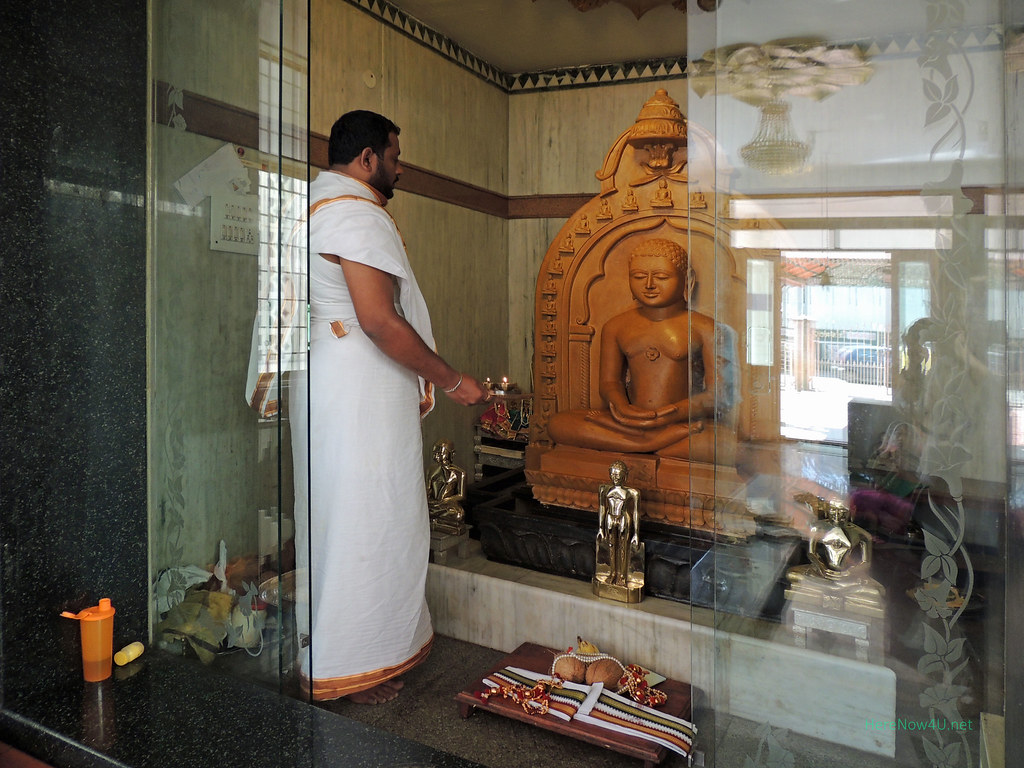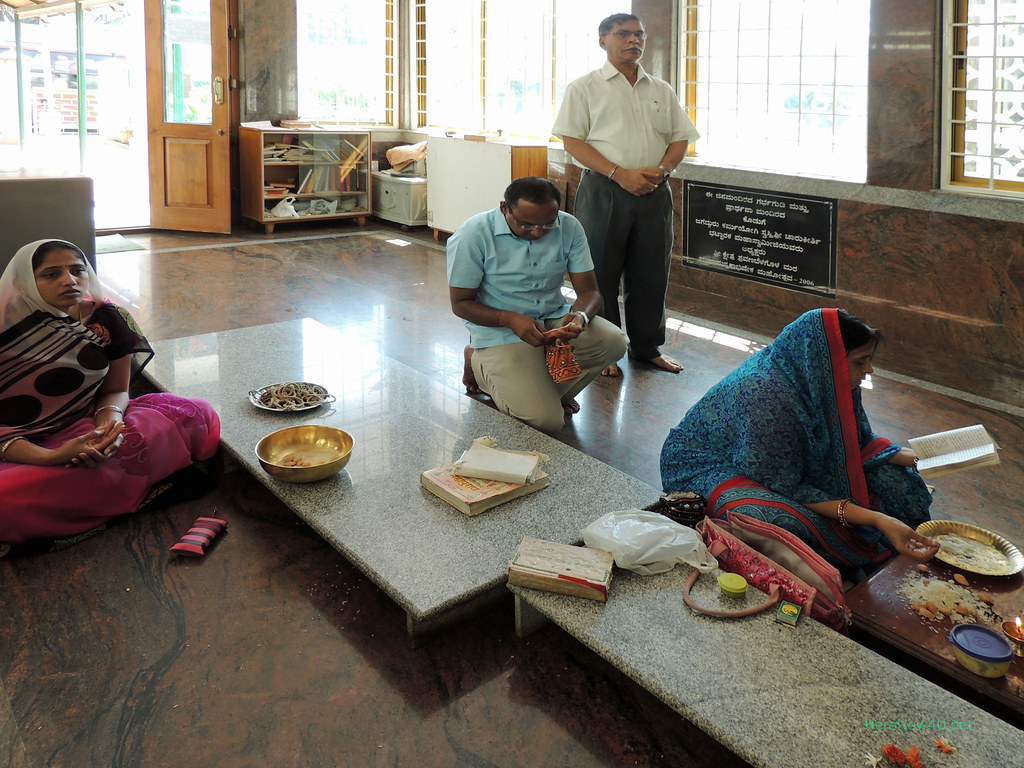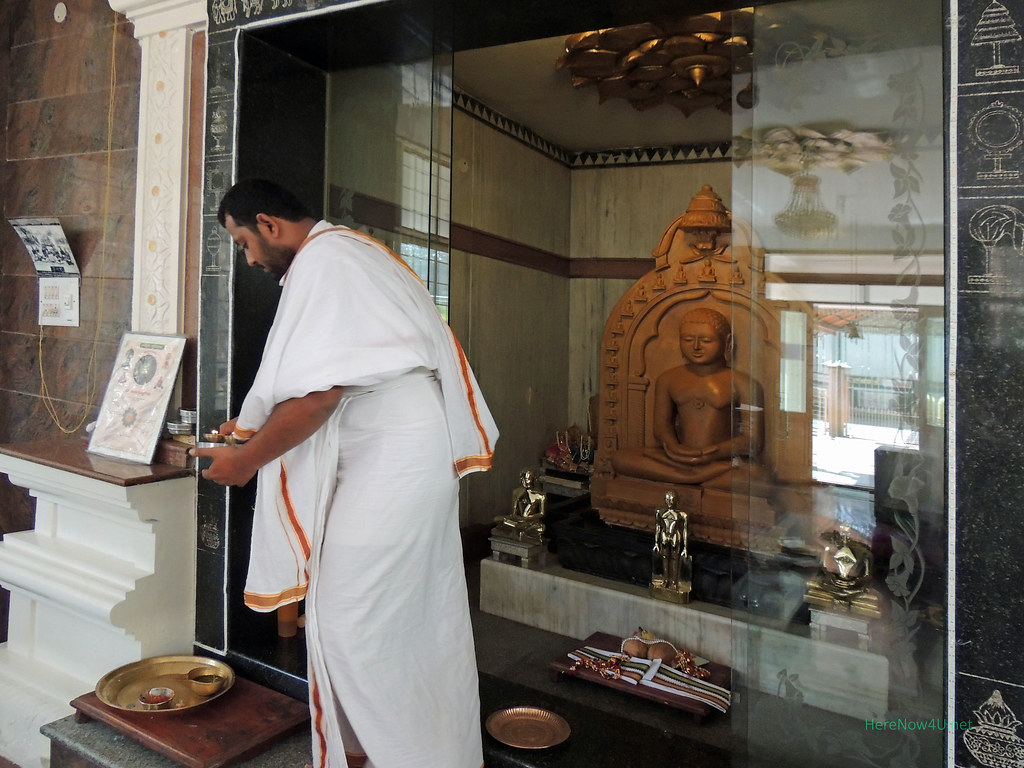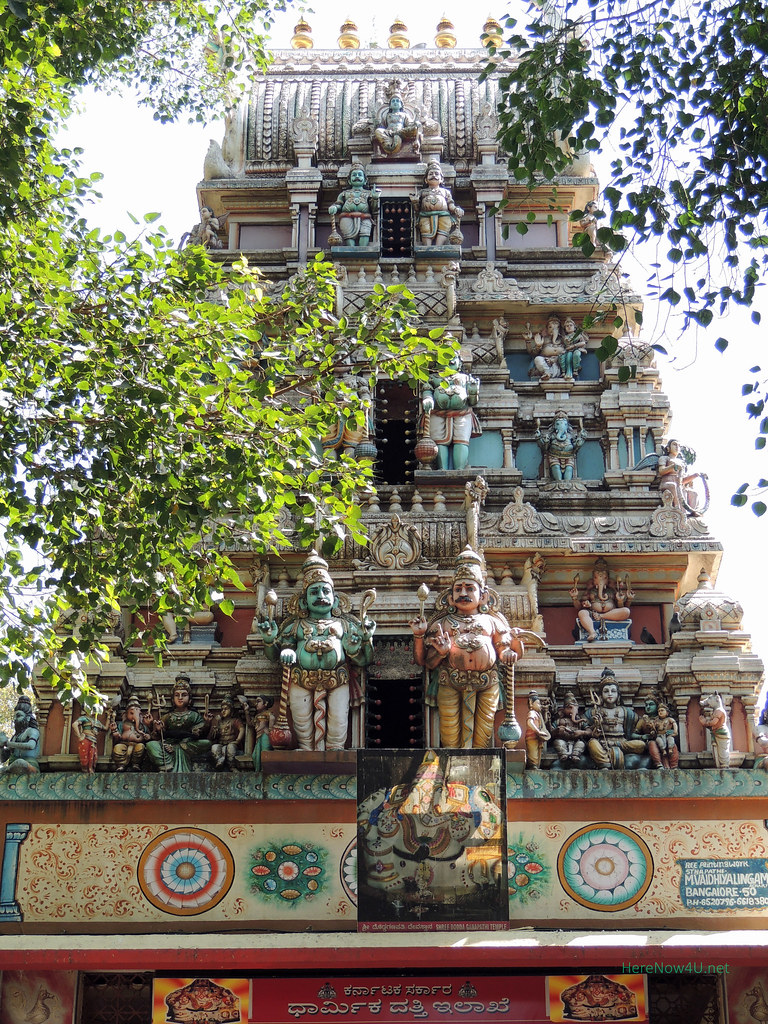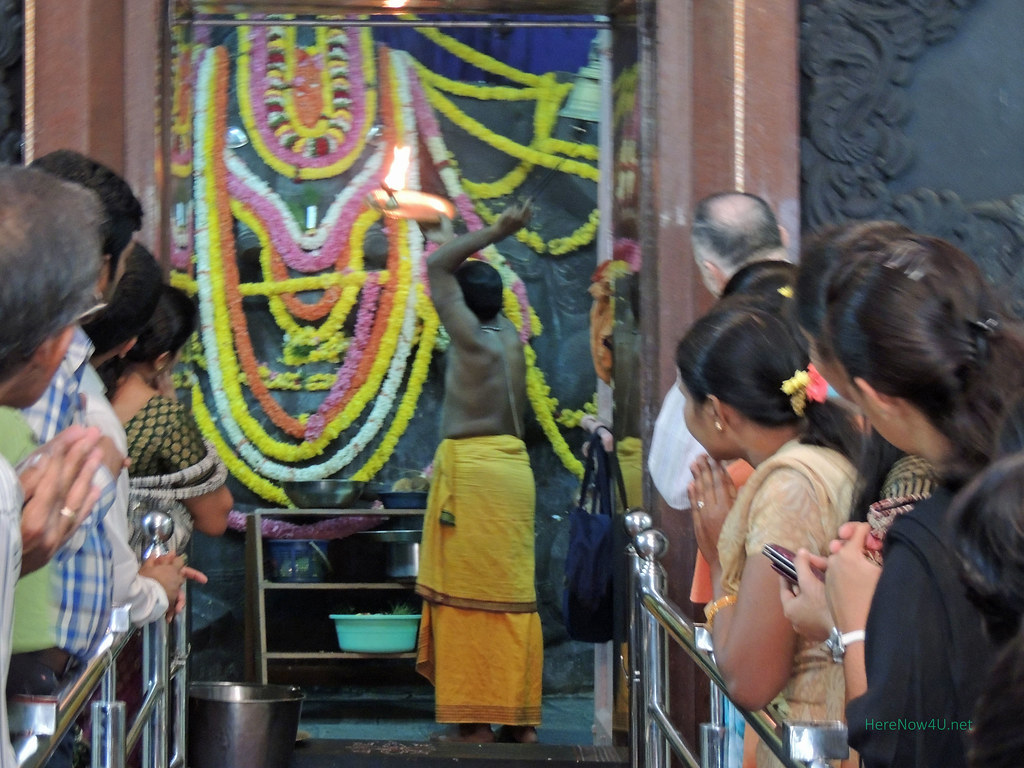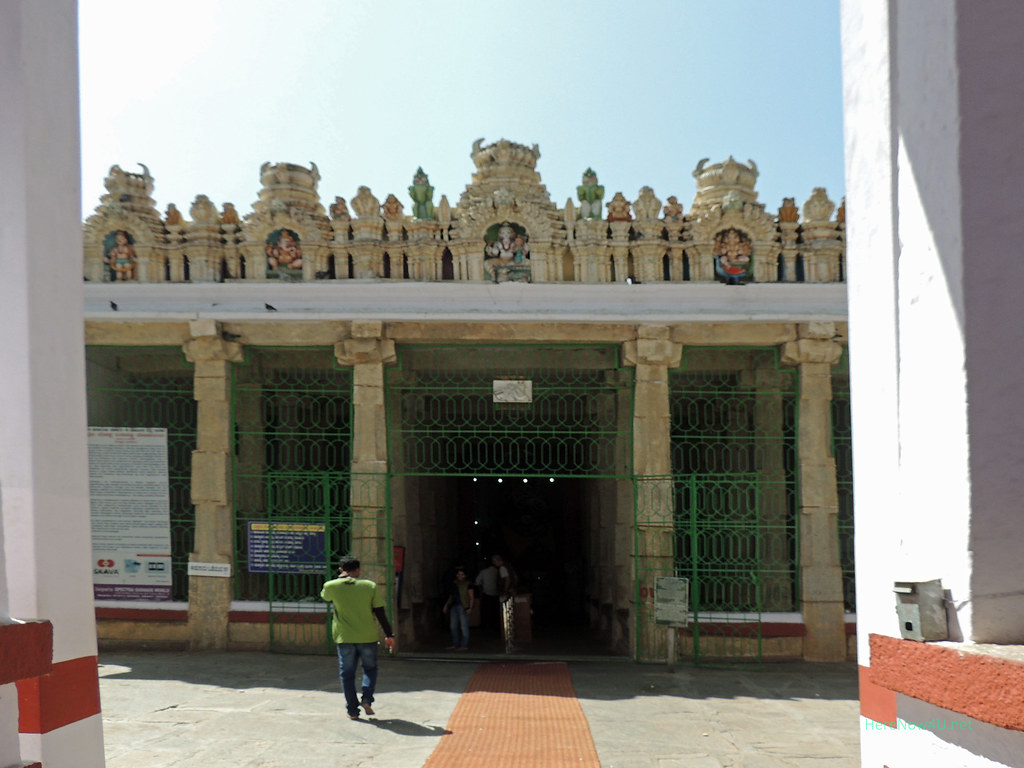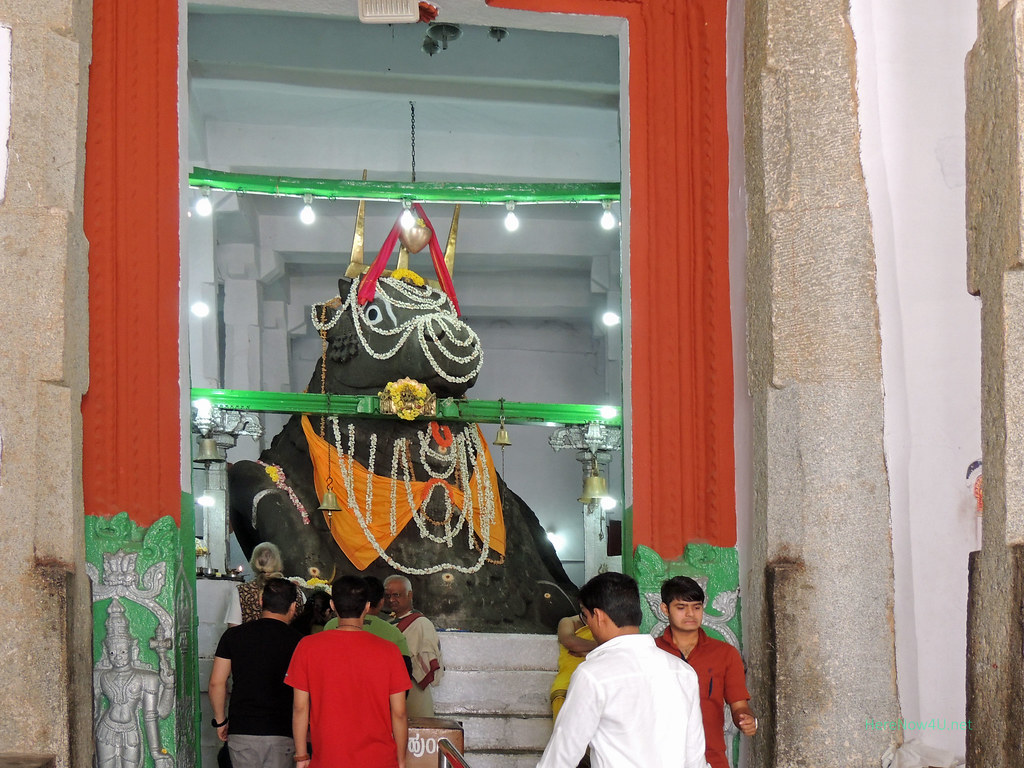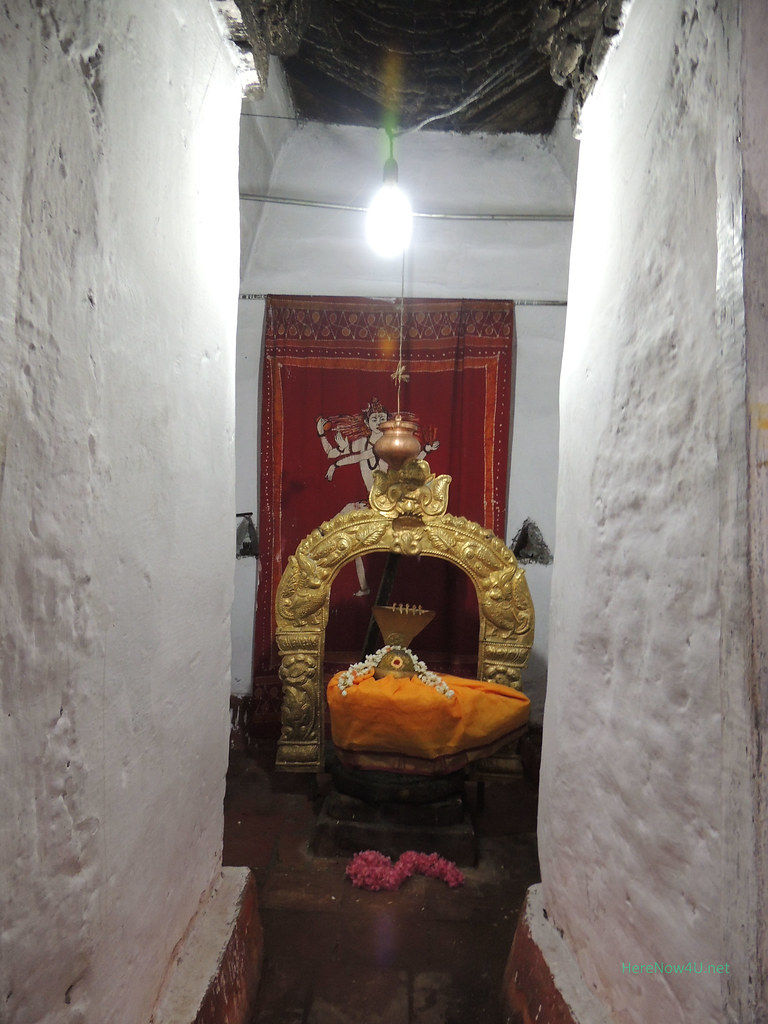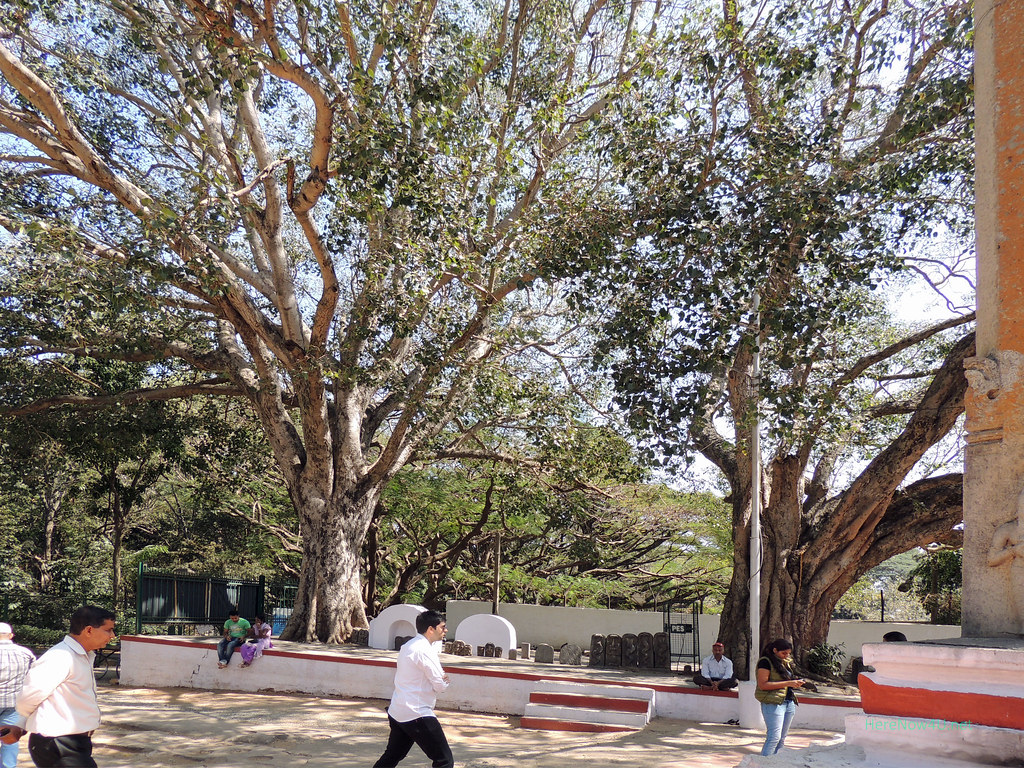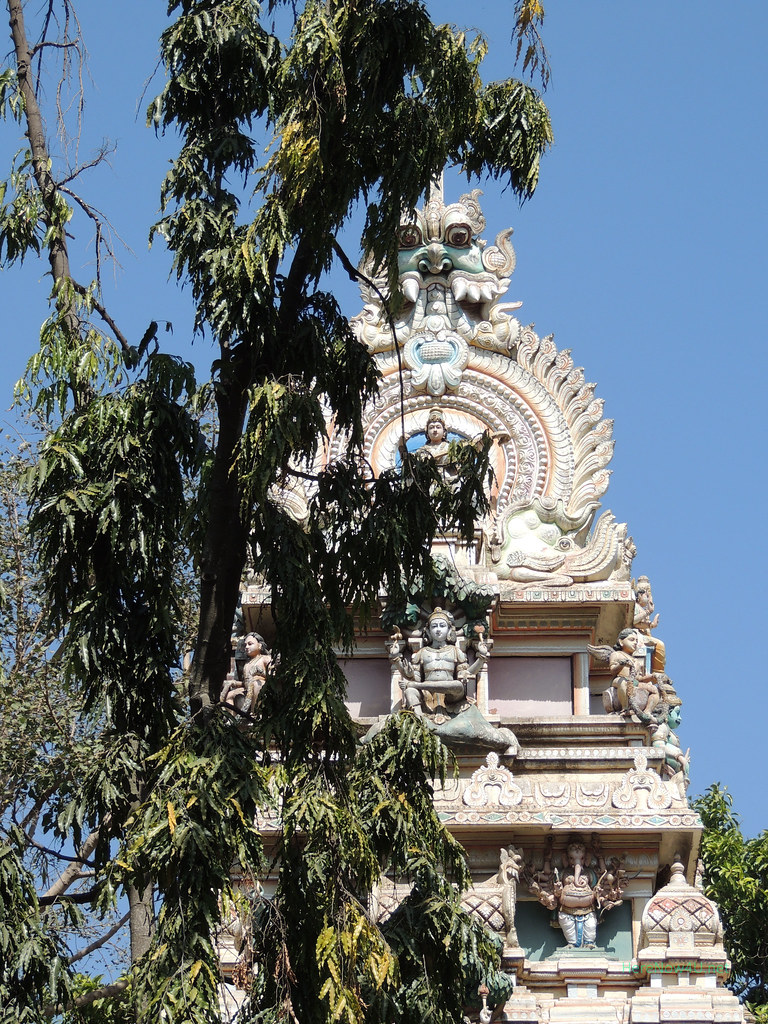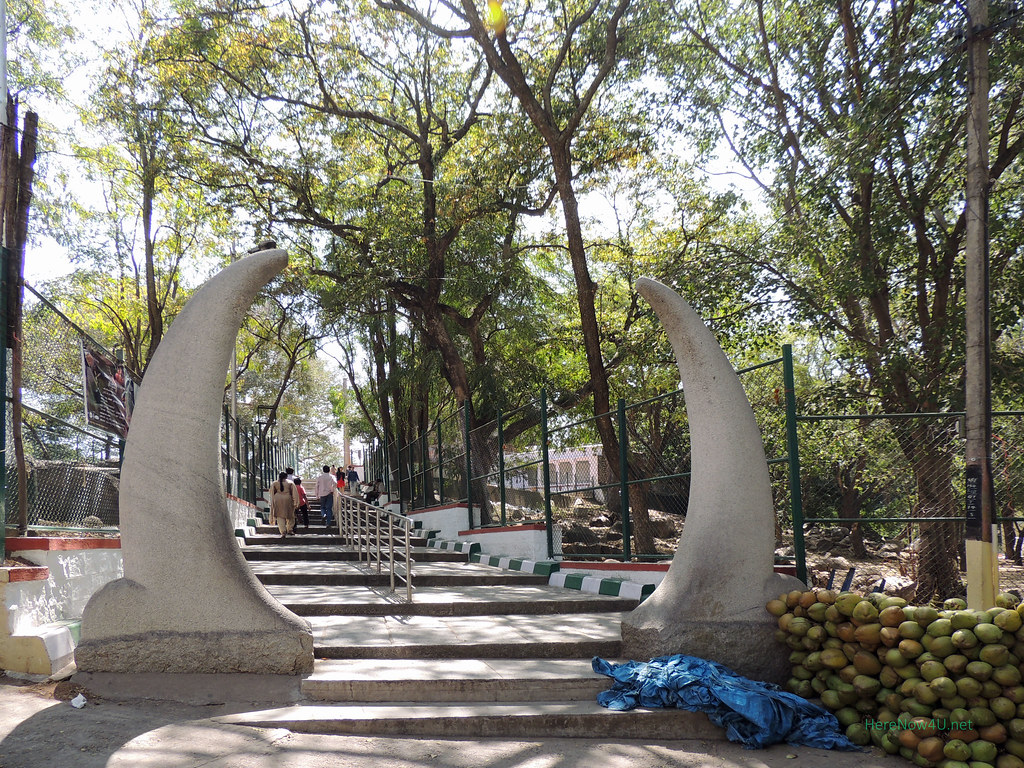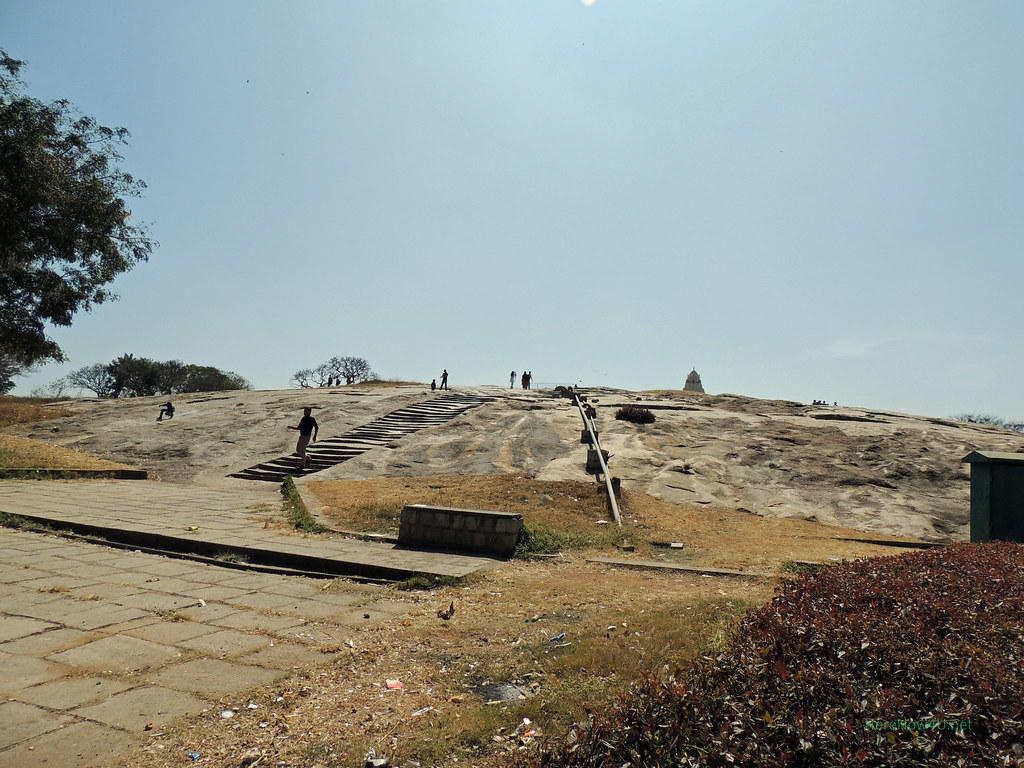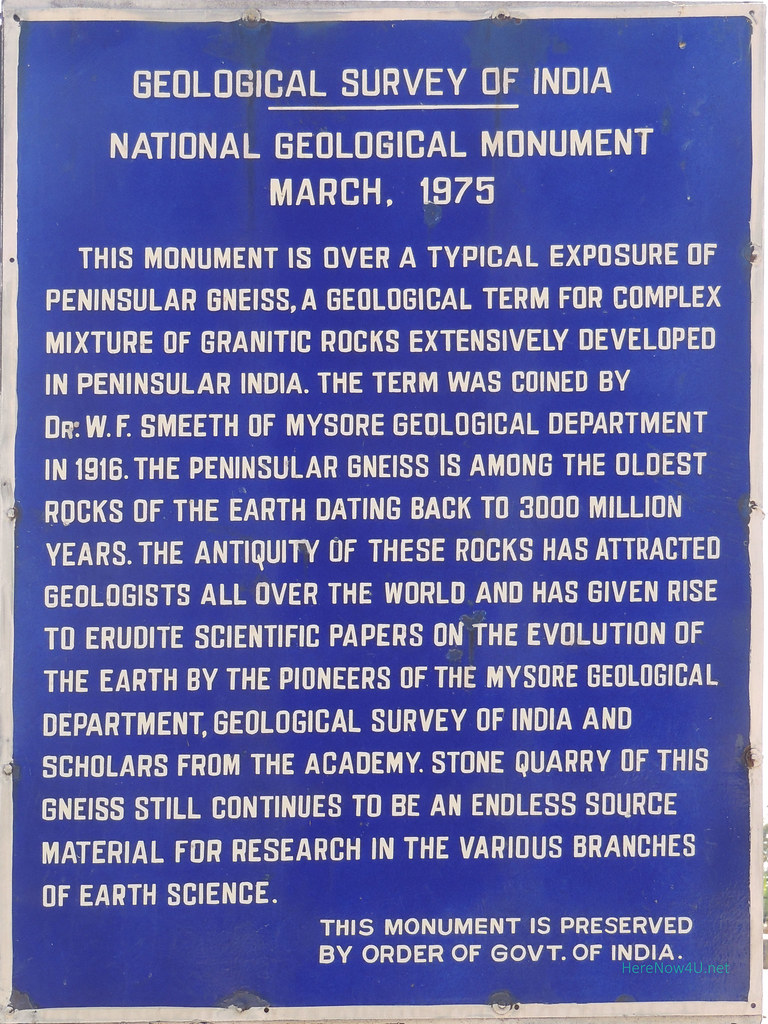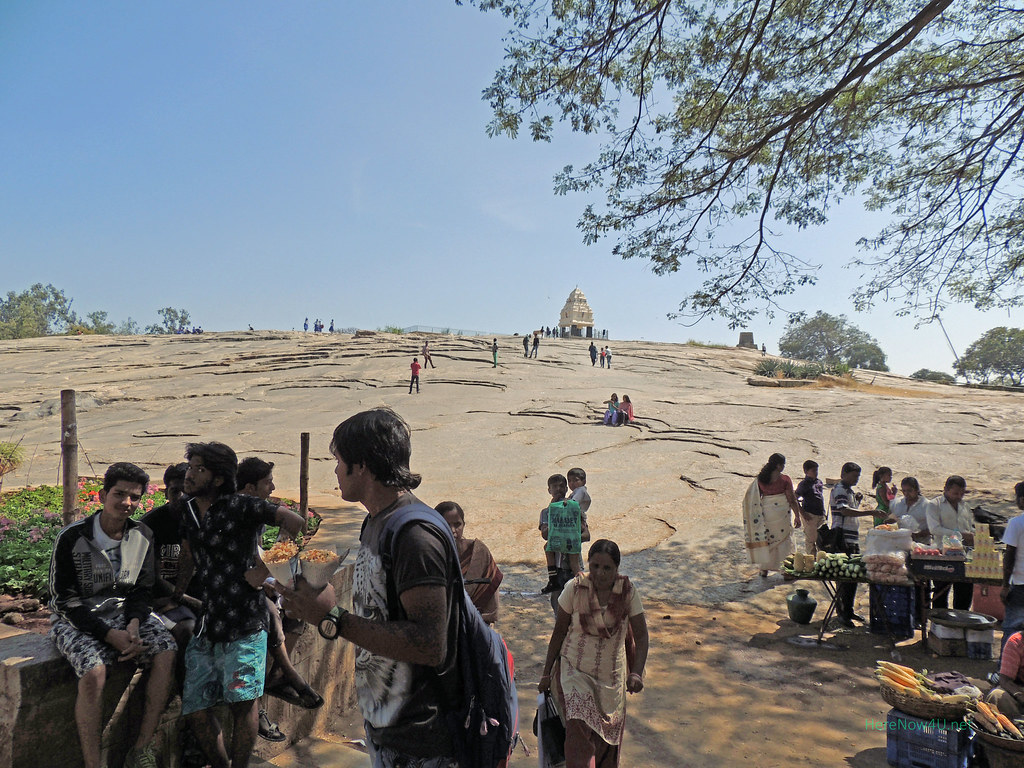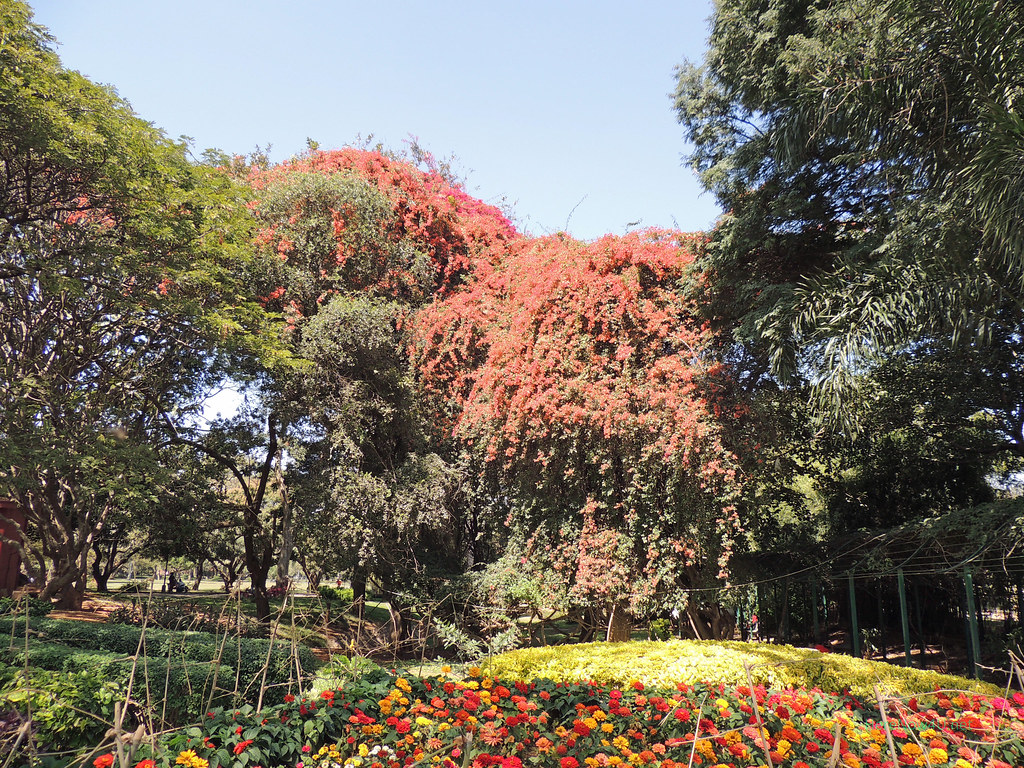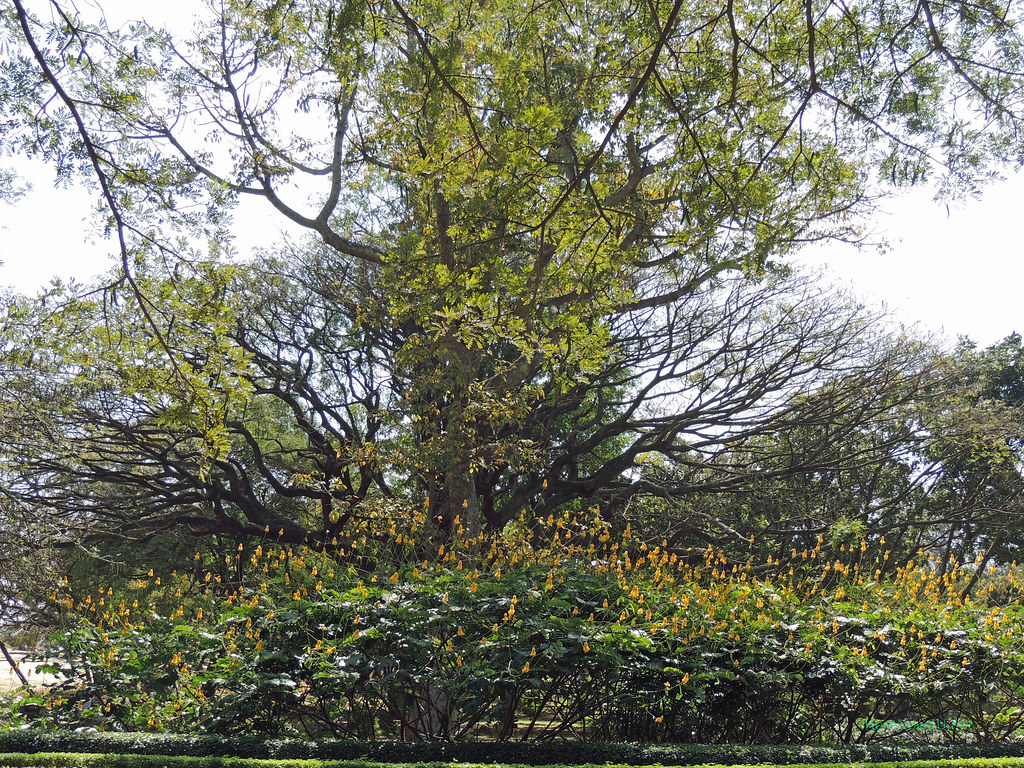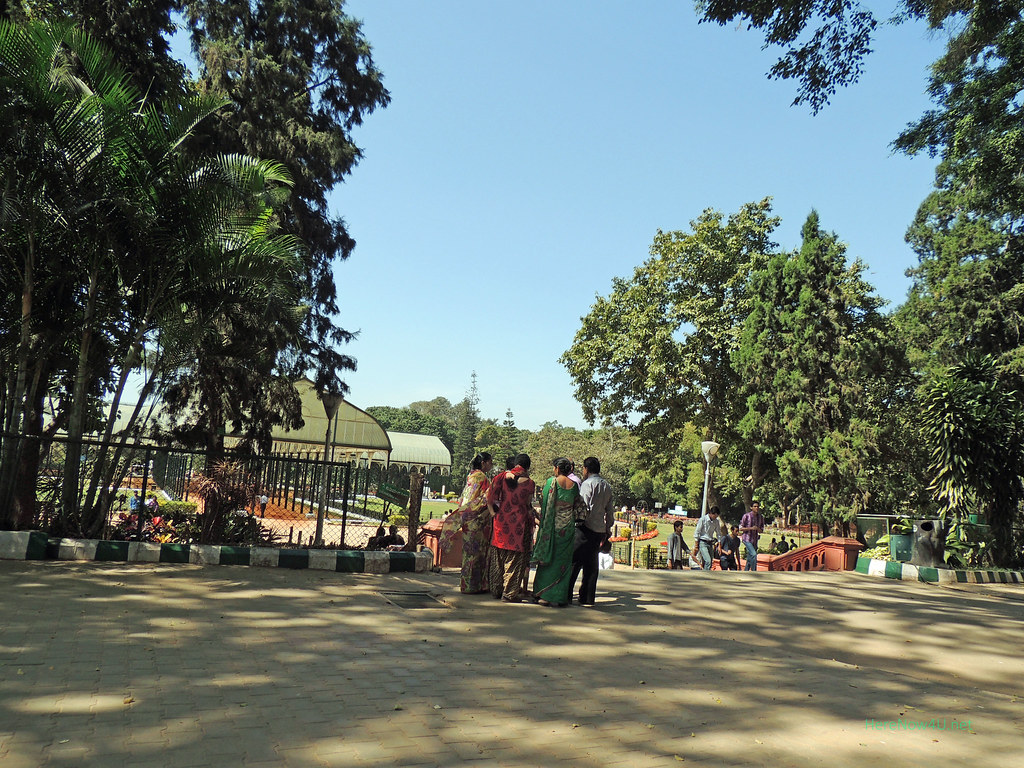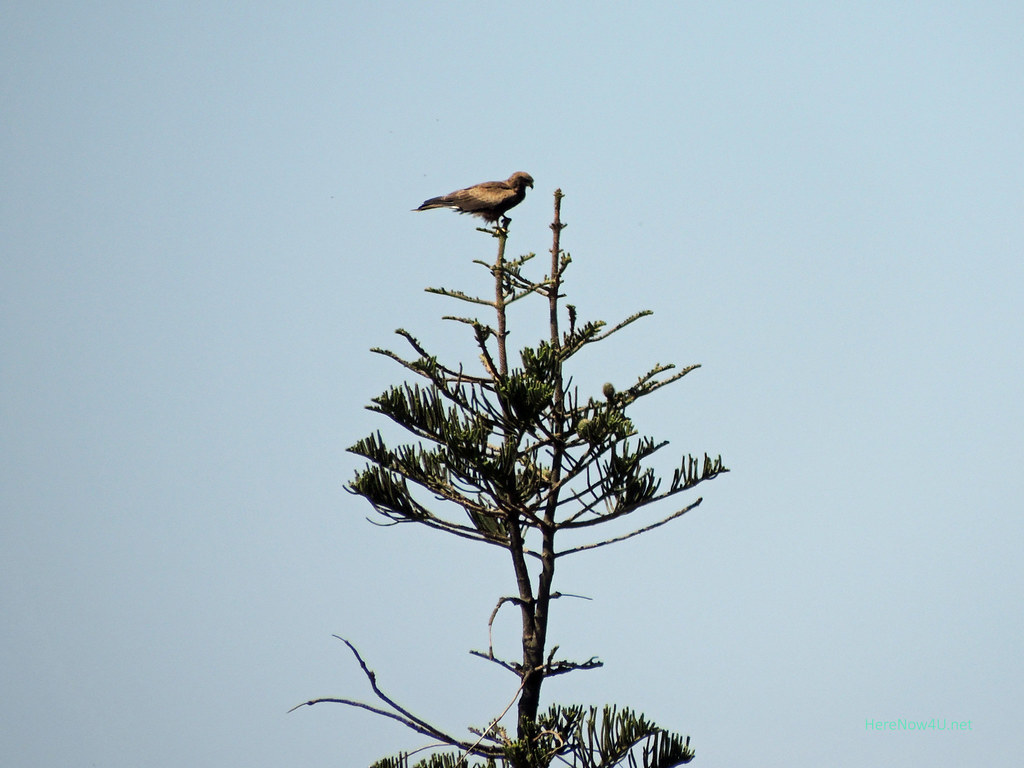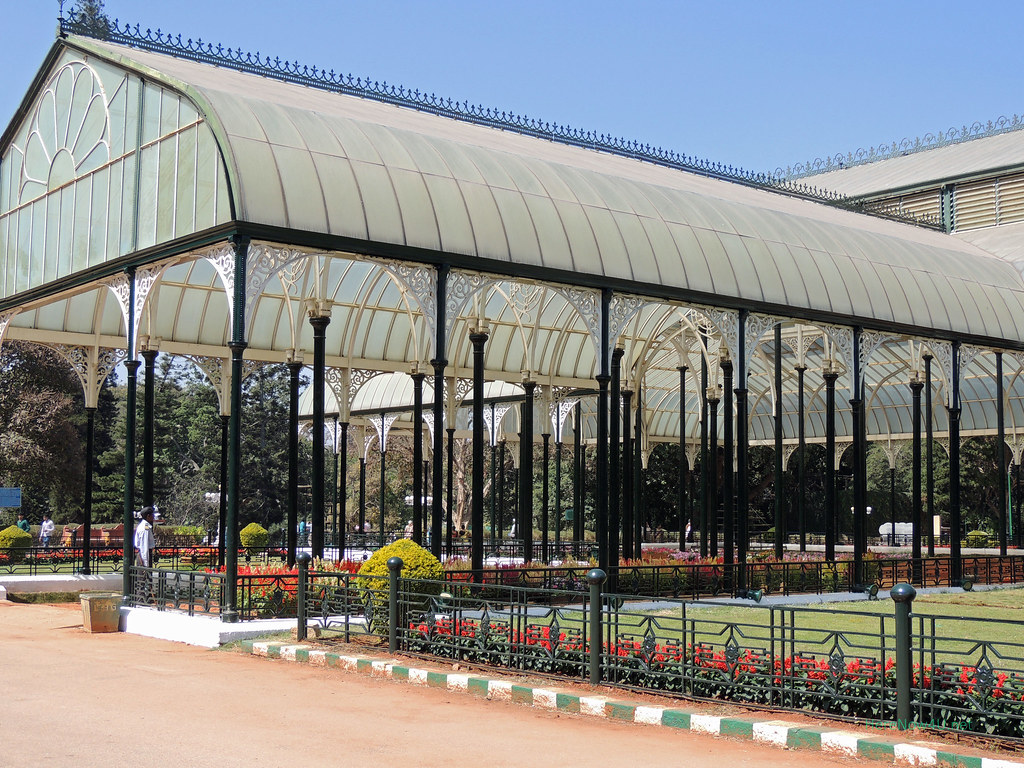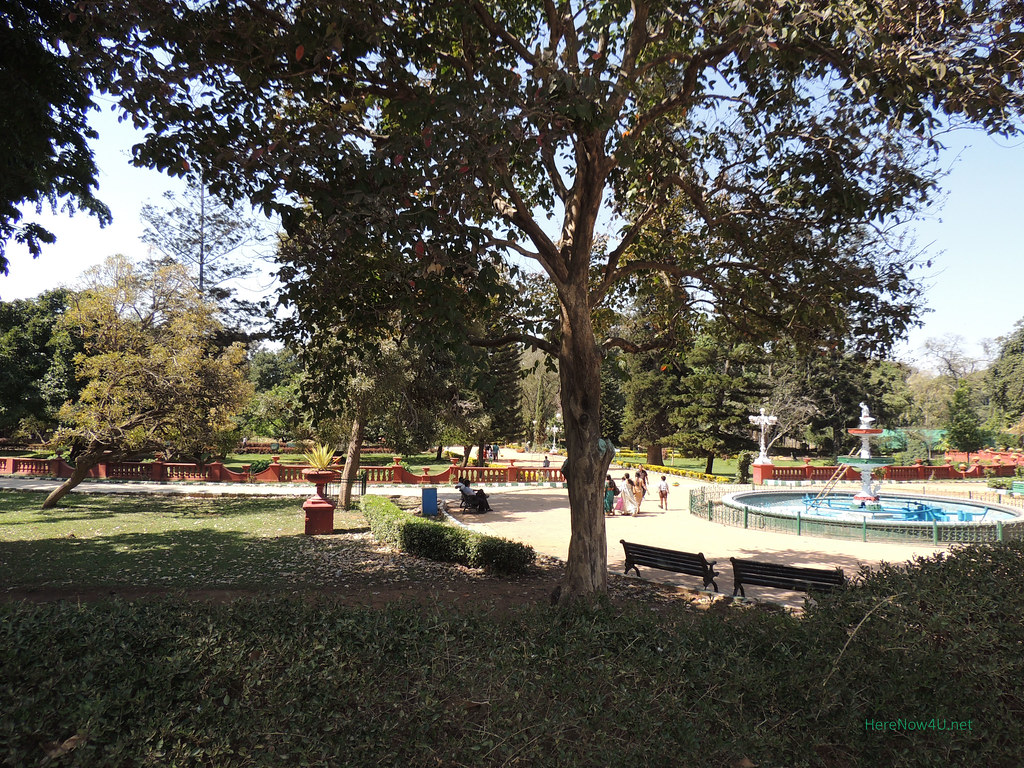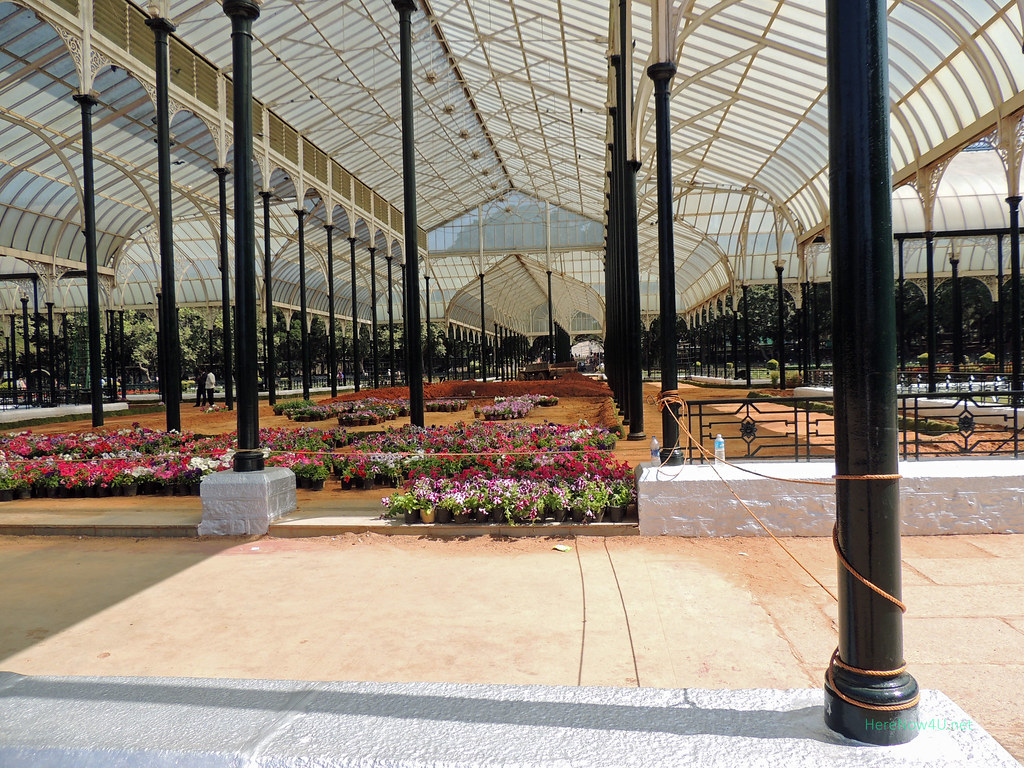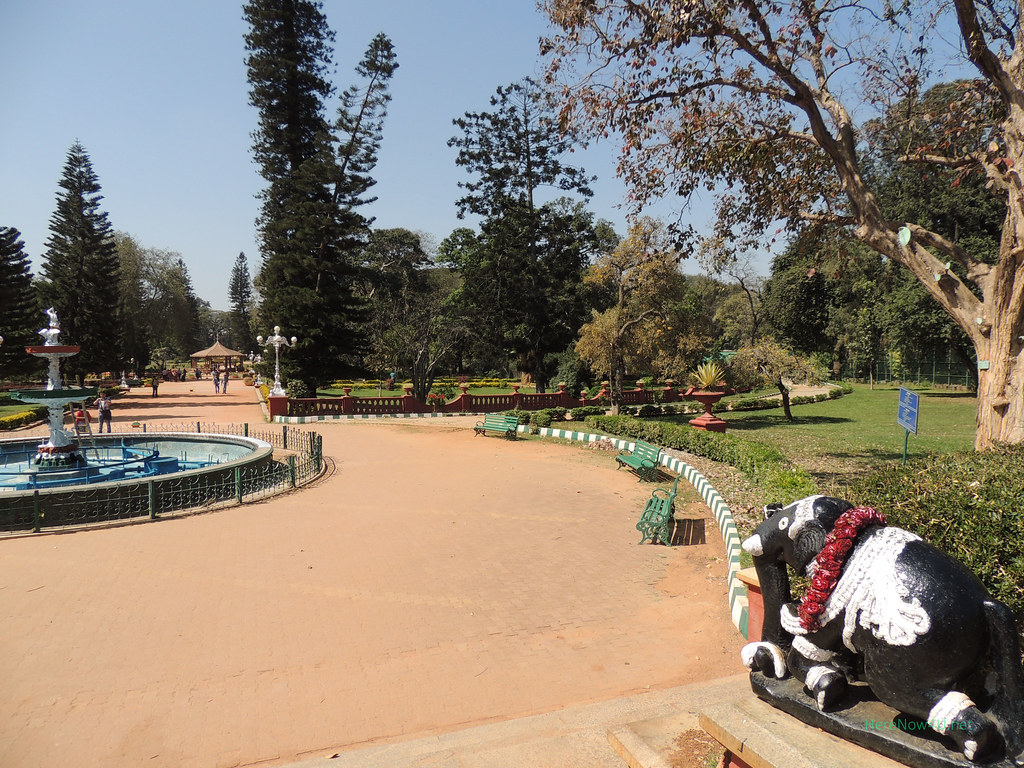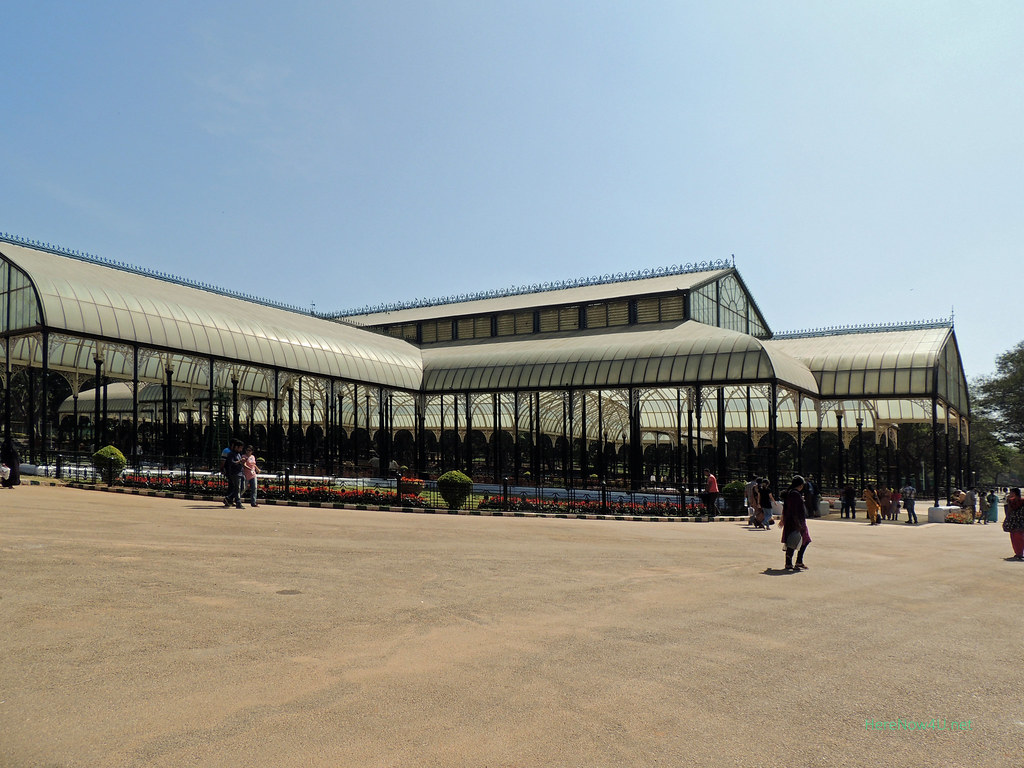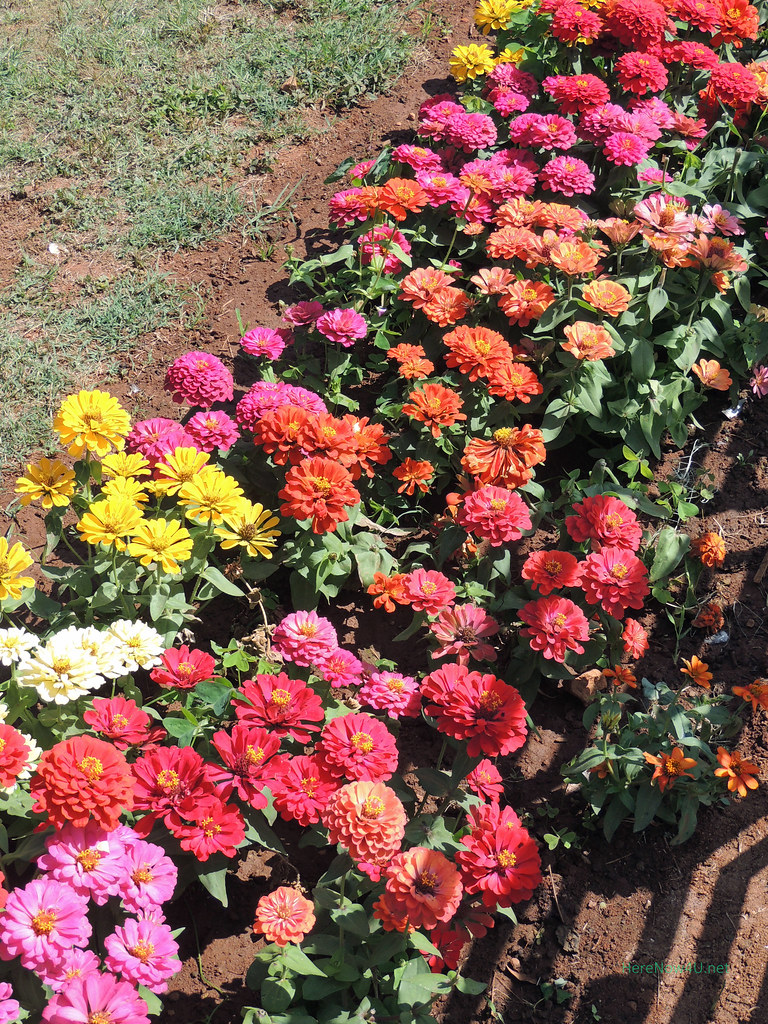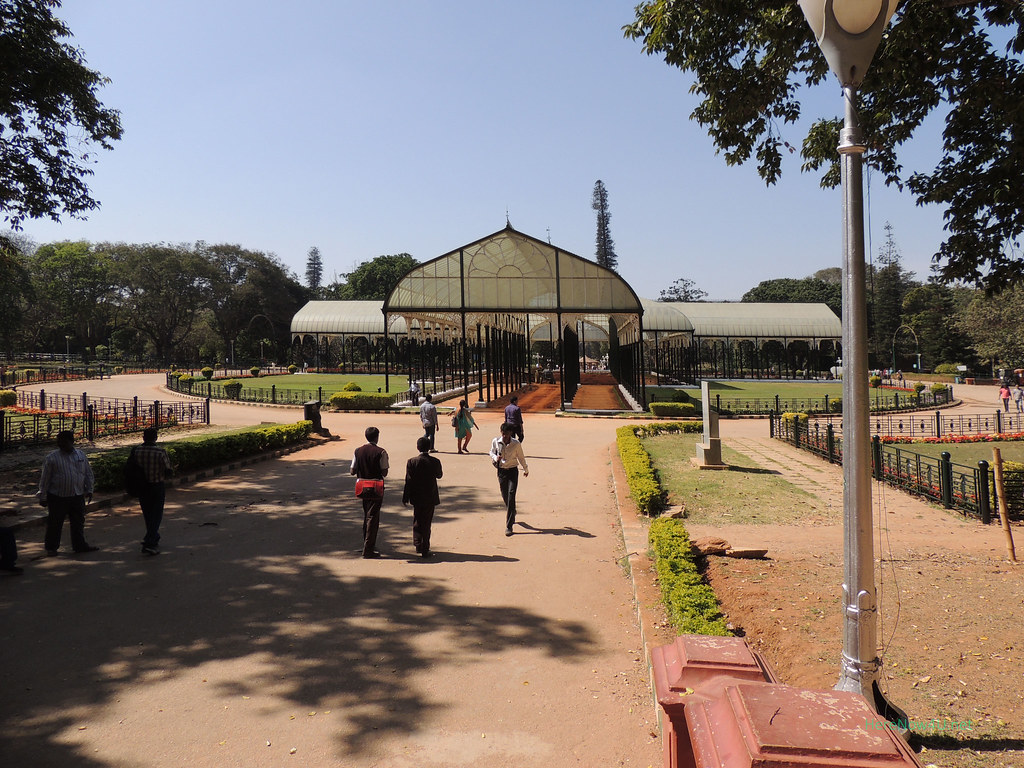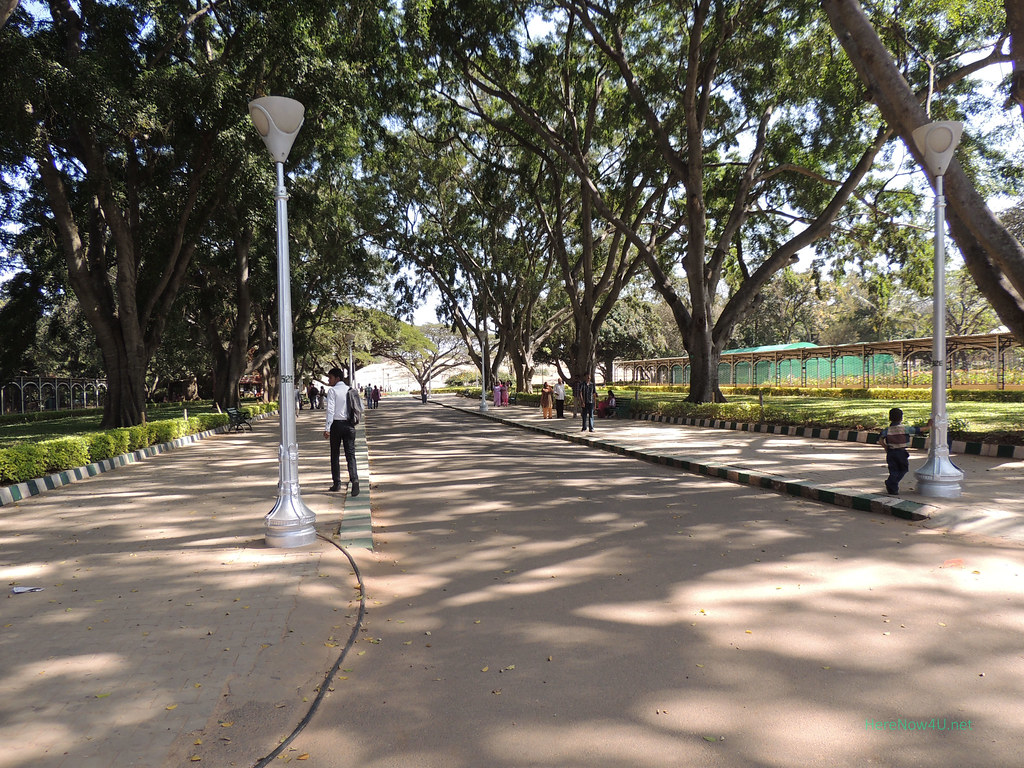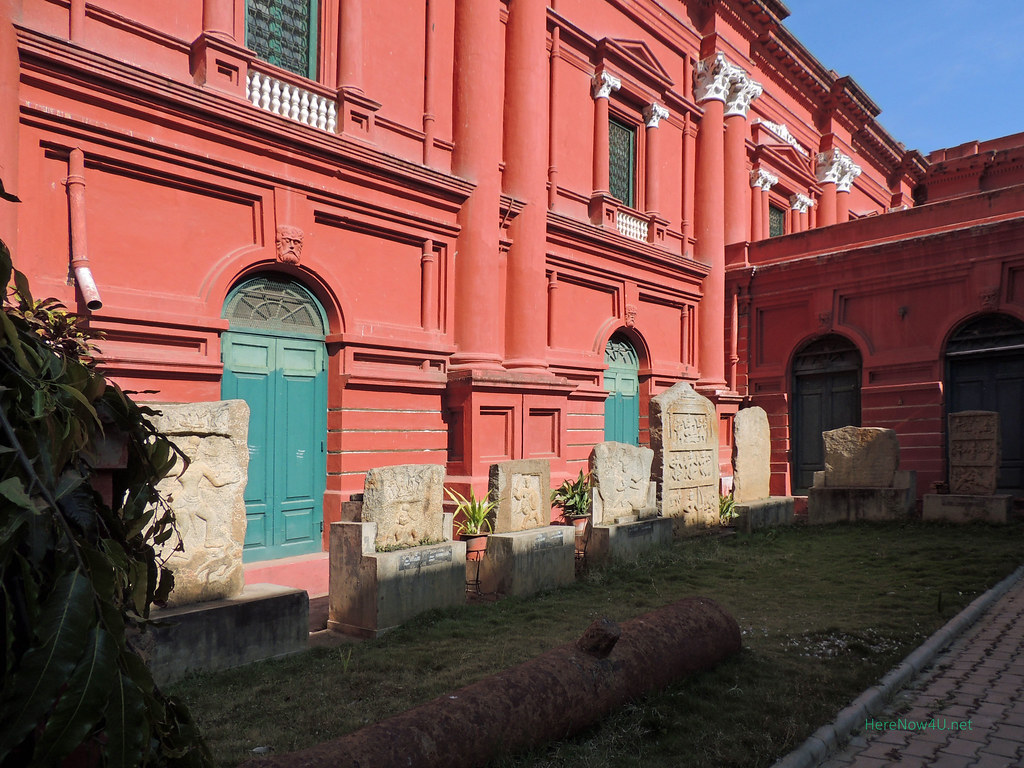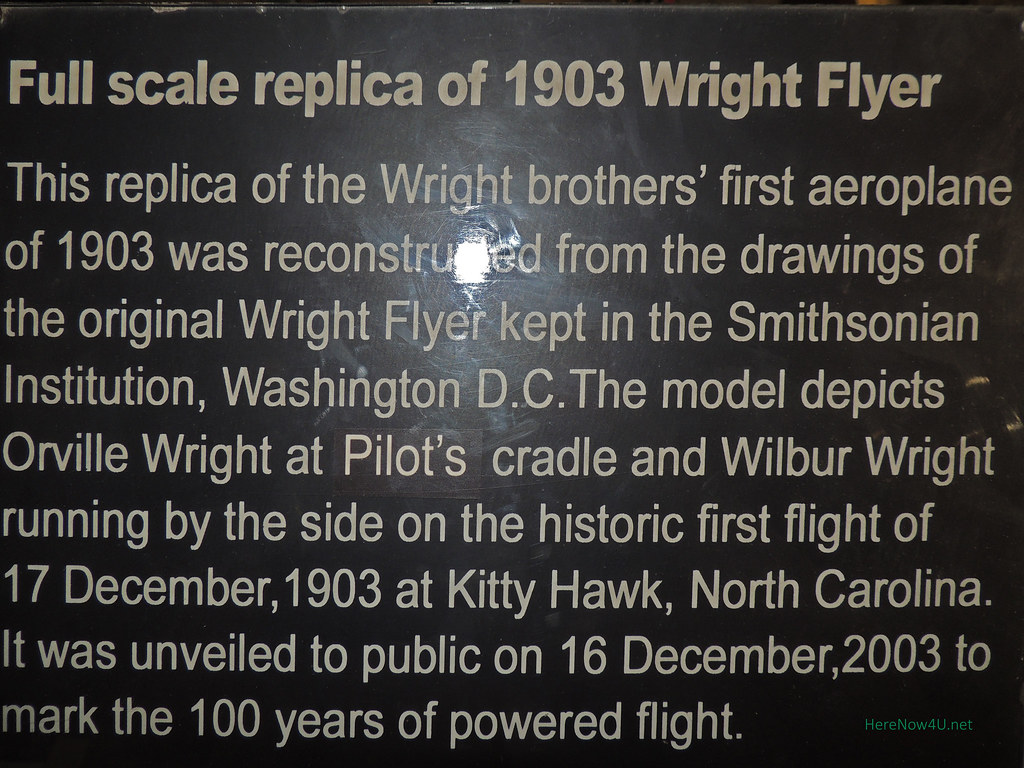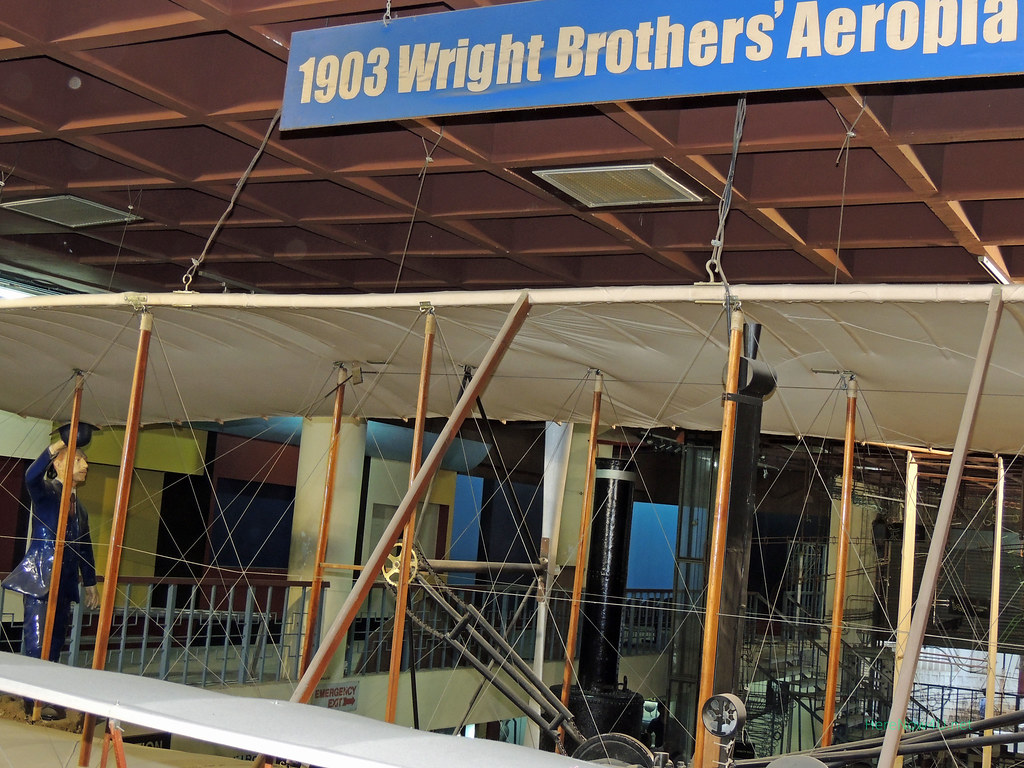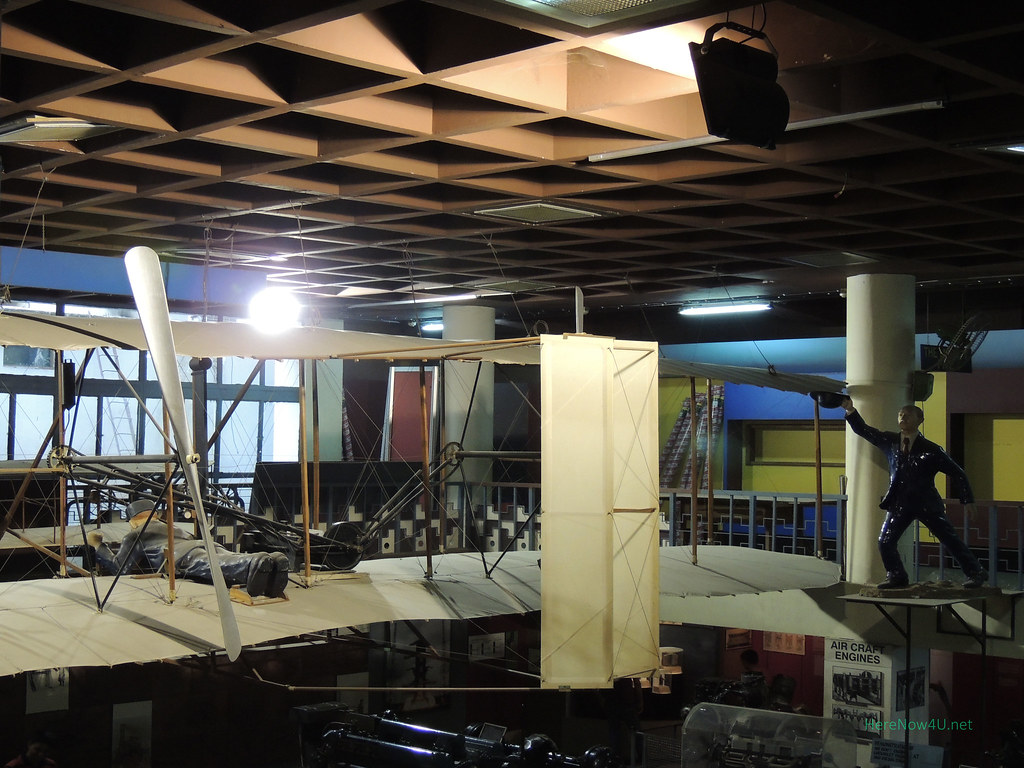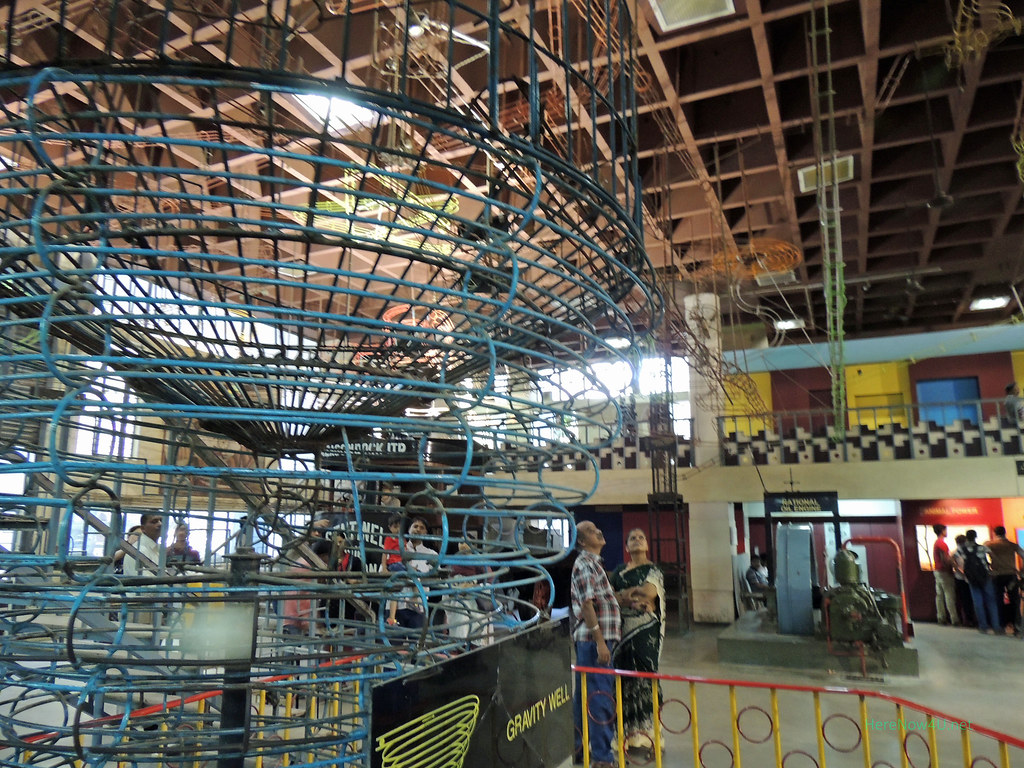Early afternoon of 12th January we arrived in Bangalore. Temperatures were at nice 26°C, in the middle of the recently constructed highway exotic plants were installed, and our destination, Karnataka Jain Bhavan, was in a distance of 40km from the airport into town, which we reached without any detour after a 90-minutes’ drive across the city grace to the excellent familiarity with all locations of the Bangalore-Airport-Prepaid-Taxis-Ltd.’s driver. Ahead of us was the first visit to a Digambara Jain community. Our meanwhile good friend Prof. Hampa Nagarajaiah had organized a round trip for us and intended to accompany us to Shravanabelagola. Since quite some time we had been in contact via email until we met personally in 2008 in Berlin. Prof. Hampa had come to Berlin together with the director of the National Institute of Prakrit Studies and Researchto honour Prof. Dr. Willem Bollée and Prof. Dr. Klaus Bruhn with the Prakrit Jñānabhārati International Awards 2006 and 2007 and to overhand the awards to the awardees in a gathering. Then we met nearly every time when Prof. Hampa came to Berlin, and now we followed his then pronounced multiple invitations. Two days after our arrival in Bangalore we planned to start together for Shravanabelagola. So some time was left for impressions of the town also known as Bengaluru (8,2 million inhabitants, third biggest Indian city).
Karnataka Jain Bhavan serves as students’ hostel for the V.V. Puram College of Science opposite. There also a canteen is available, but closed on Sunday, our day of arrival. Meanwhile we were rather hungry, as we had not eaten anything. At our arrival we were welcomed by the general secretary and the concierge of Karnataka Jain Bhavan. Prof. Hampa had entrusted them to take care for us until we left for Shravanabelagola. After reaching the Bhavan, he welcomed us by phone, and all of us very much looked forward to the trip in two days. Further he announced a sightseeing tour to us for the next day.
When our hosts heard from Prof. Hampa that we were hungry they immediately asked someone to accompany us to a very god quick-restaurant nearby. It was at no great distance, but for Christian Geerdes it was an exhausting walk, as he had been infected in Jaipur with a bad bronchitis. He was rather affected, and finally had to take antibiotics. Later in the afternoon the president of Karnataka Jain Association, Jitendra Kumar, extra came to welcome us.
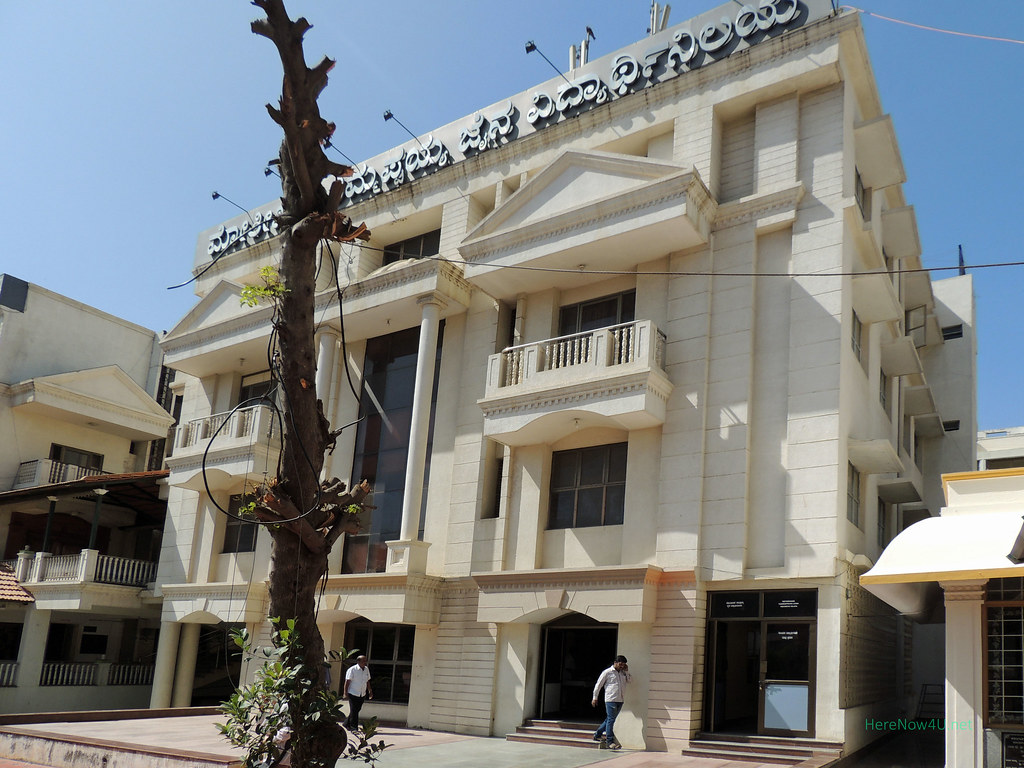
Karnataka Jain Bhavan (m), in its left wing social celebrations like wedding parties take place, on the right it's Mahavir Temple.
Next morning our hosts invited us to visit the Mahavir Temple belonging to the area. The president of Karnataka Jain Association, Jitendra Kumar, as well as the general secretary Rajendrakumar and another colleague got blessings from the Pujari who also marked their foreheads between the eyebrows with saffron paste, and we got the same. Then both of us were honoured with shawls, a very nice Jain custom in honour of their guests.
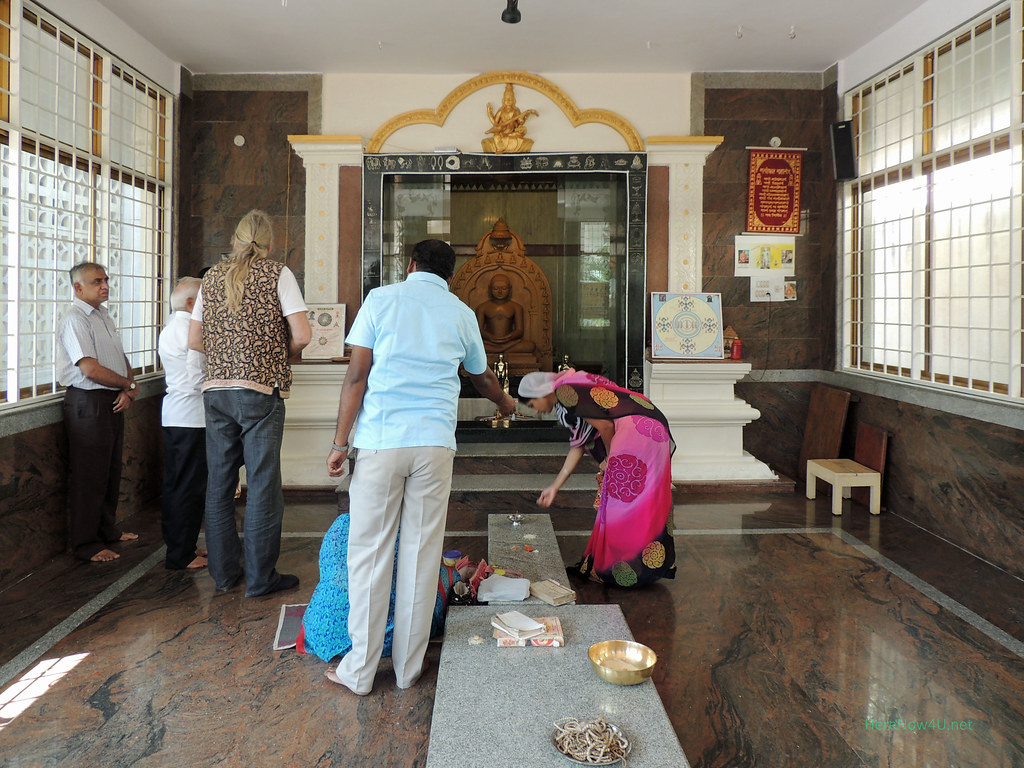
Inside Mahavir Temple
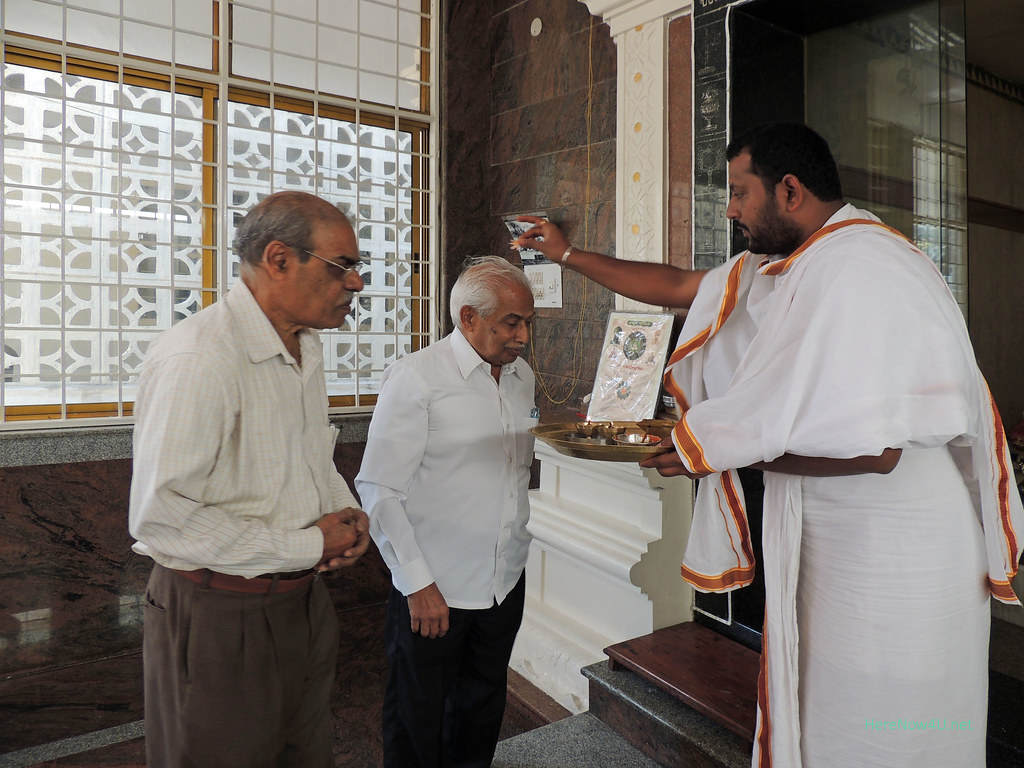 Priest sprinkling sacred water on the head of Jitendrakumar & Rajendrakumar wating for his turn
Priest sprinkling sacred water on the head of Jitendrakumar & Rajendrakumar wating for his turn
Priest sprinkling sacred water on the head of Jitendrakumar & Rajendrakumar wating for his turn.
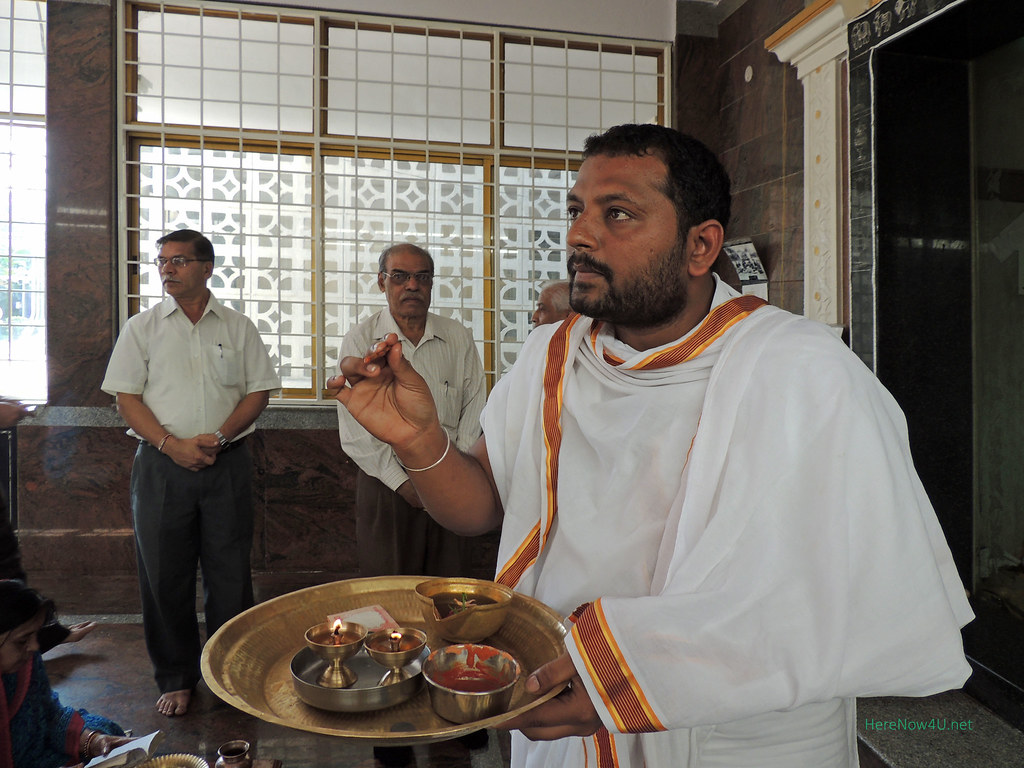 Priest Divya
Priest Divya
Priest Divya

President Jitendra Kumar honours Christian Geerdes, after that also me, with a shawl in the Temple.
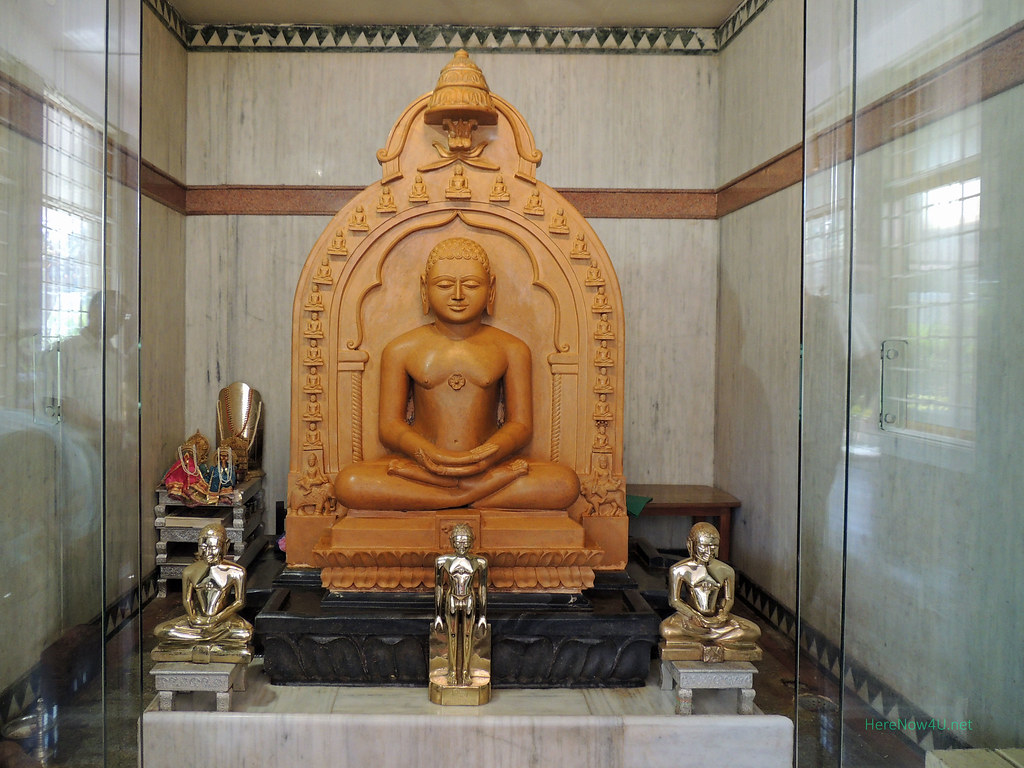
Depiction of Mahavir in golden coloured Jaisalmer stone.
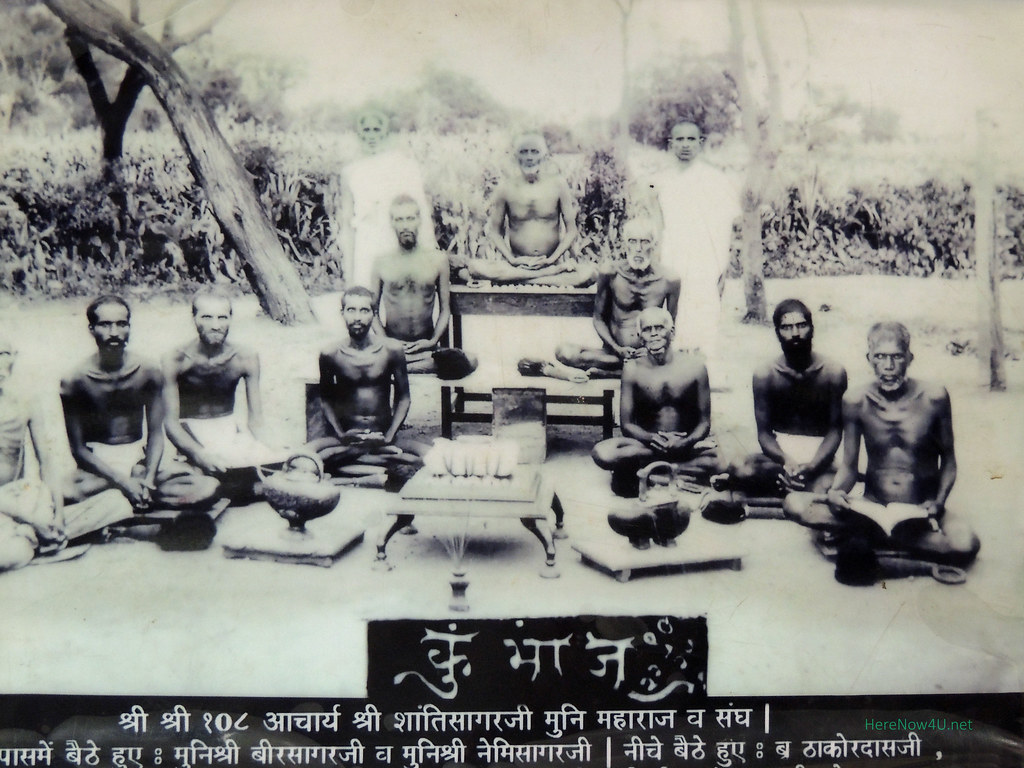
Black and white photo of a monk group on a wall in the Temple
After this the taxi for the sightseeing tour arrived. After a short communication on the destinations and many blessings we started. First stop was at Shree Dodda Ganapathi Hindu Temple dedicated to Ganesha, where also the Big Bull Temple, dedicated to Shiva’s Bull can be visited. The temple area is situated in a park on a small hill consisting of rocks, it’s name is Bugle Rock. On our way we saw that at present the whole city is undergoing a process of modification. Construction of Metro and of highways avoiding the centre is taking place at the same time, changing dramatically Bangalore’s look. We’ll cross that bridge when we come to it.
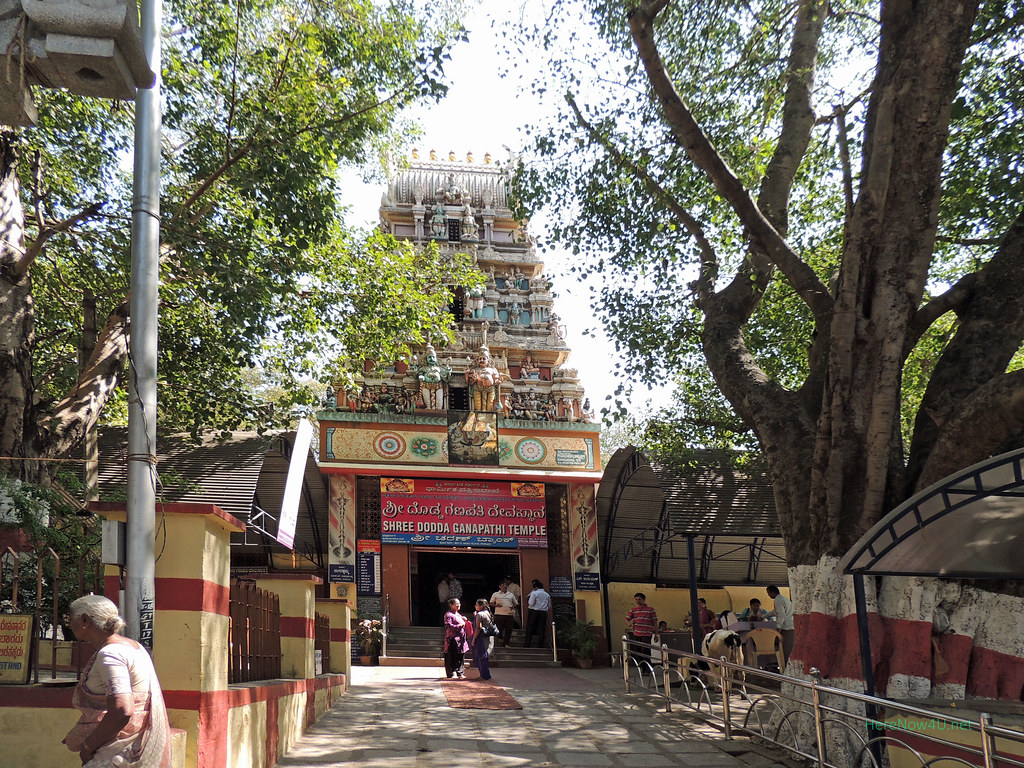
Entry of Shree Dodda Ganapathi Hindu Temple.
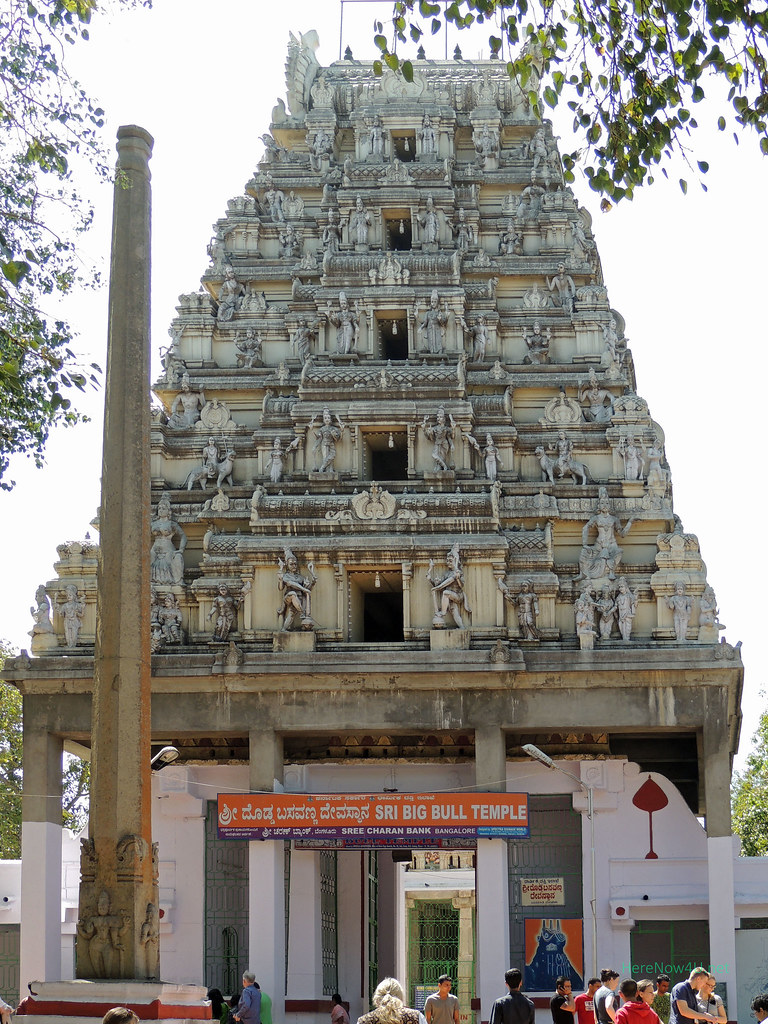
Entry to Big Bull Temple
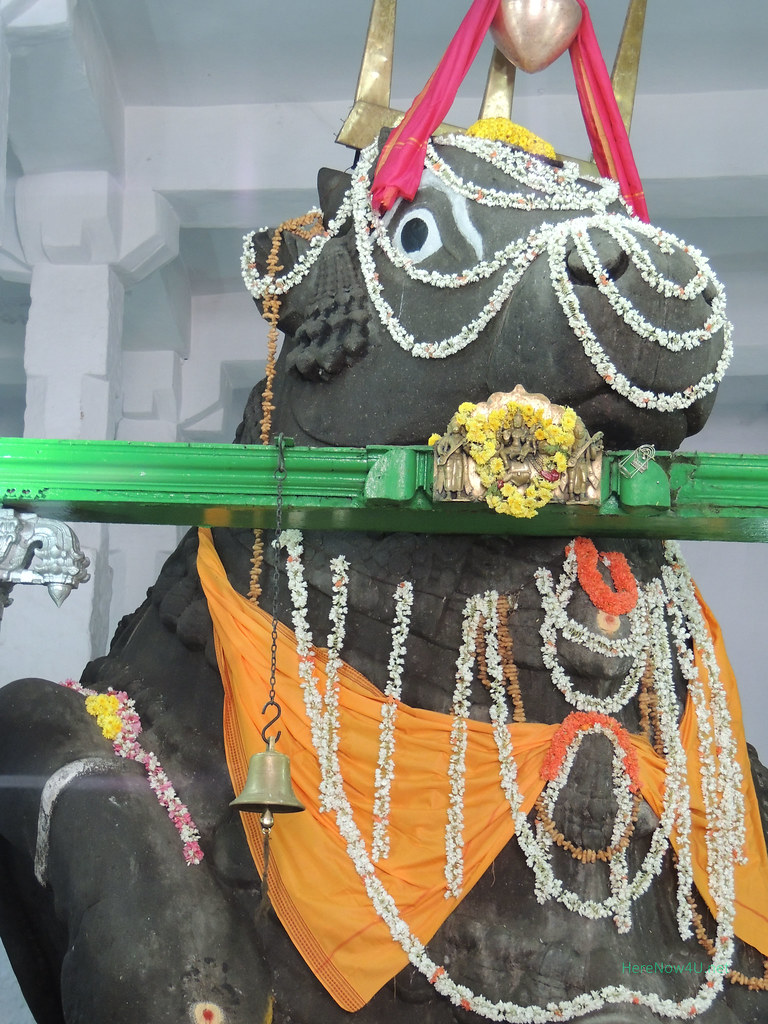
Big Bull, who gave the name of the temple.
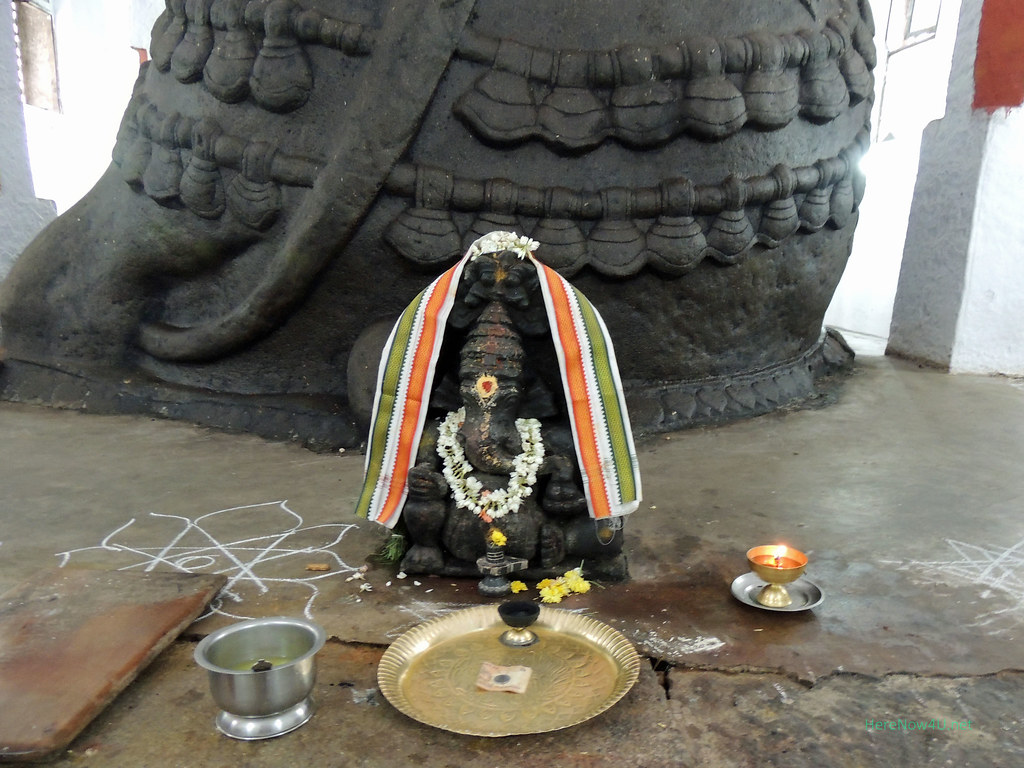
Statue of Ganesha at the feet of Big Bull
Thereafter we went to Lal Bagh, the famous Botanical Garden of Bangalore. Broad alleys invite for promenades, and old trees for reveries. The centre of Lal Bagh consists of a glass house, erected in honour of Prince Albert when he visited Bangalore at the end of 19th century. Seasonal plants just were brought for bedding out. Another attraction is the Gneiss rock, declared as geological monument in 1975, after being named in 1916 by geo scientists of Mysore University. The Gneiss rock is one of eldest rocks on earth with an estimated age of 3,000 million years.

Entry Lal Bagh
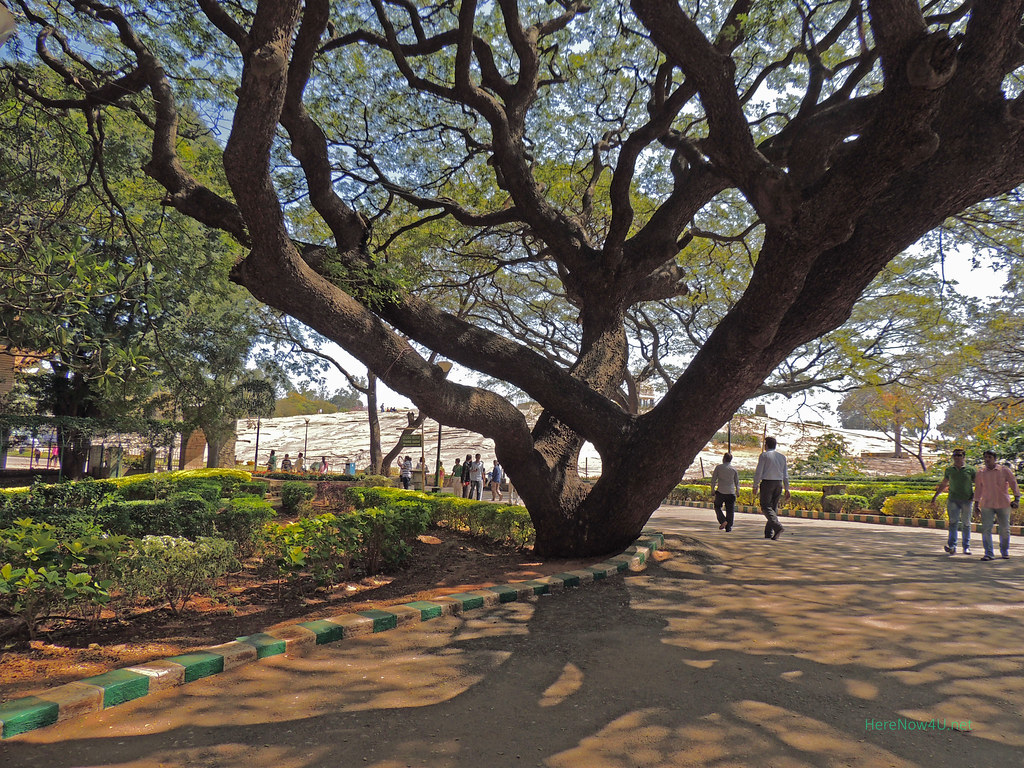
Alley with old tree in Lal Bagh, the Gneiss rock in the background
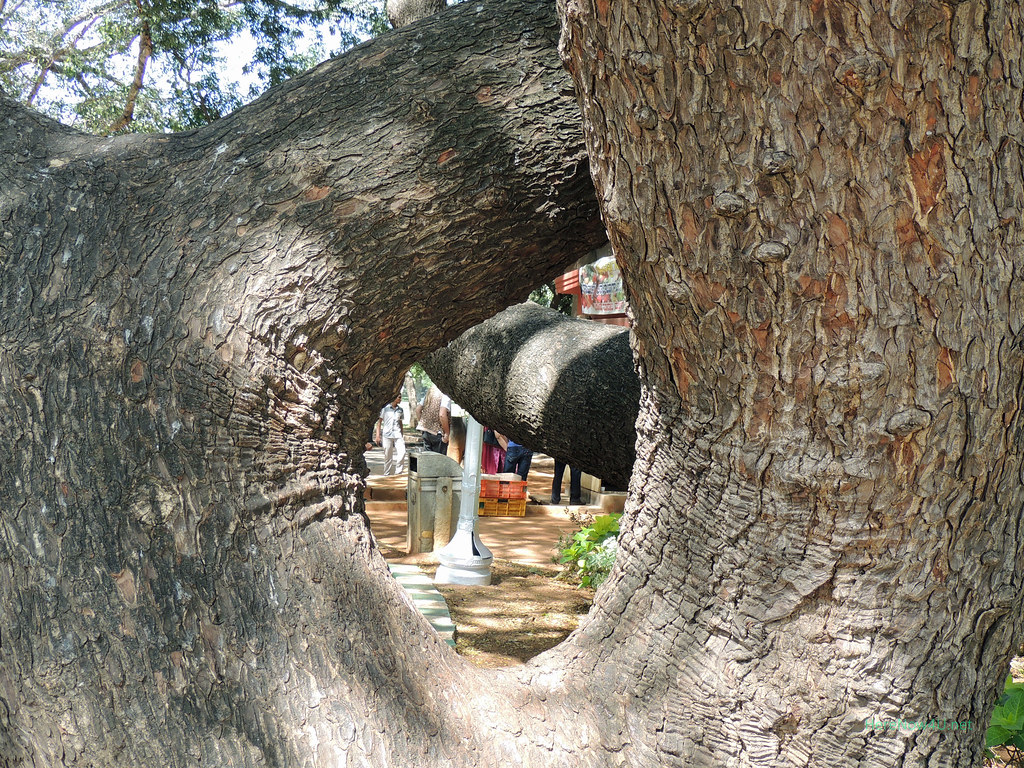
Loopy trunk
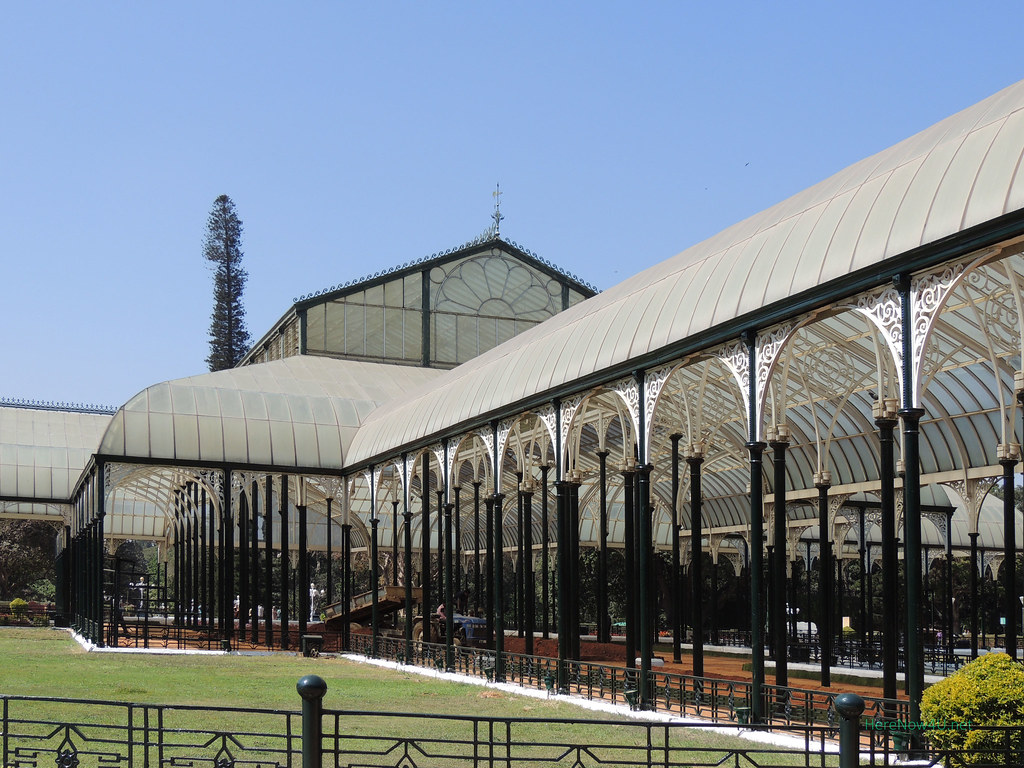
Lal Bagh Glass House
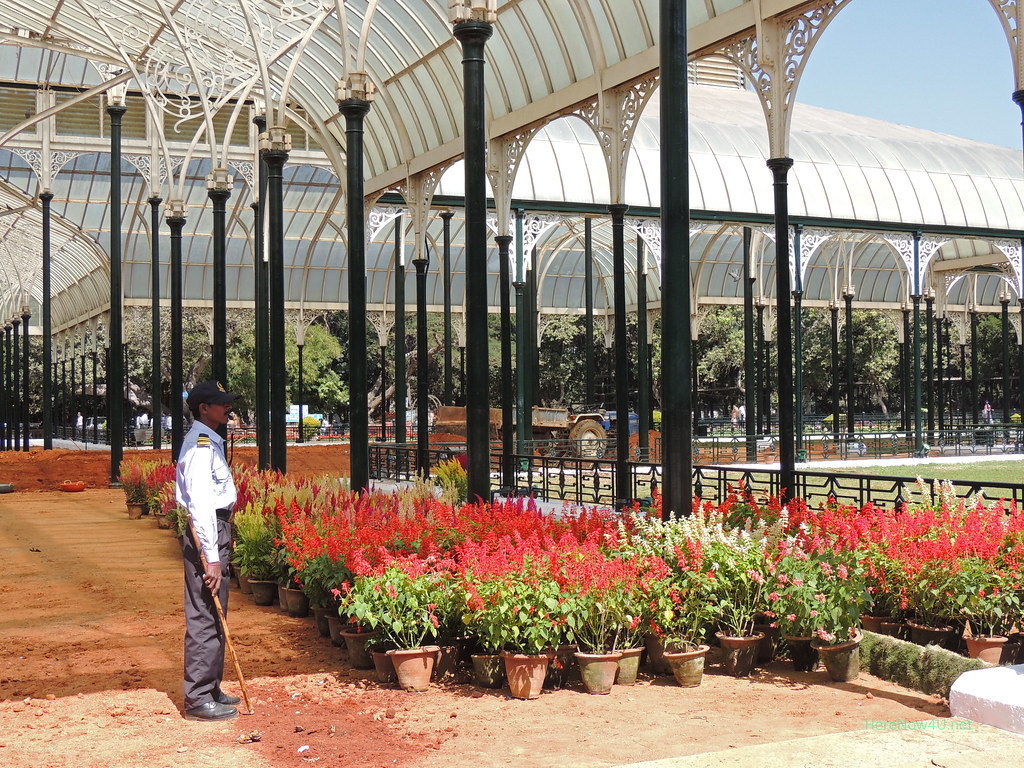
Ready for planting!
The superb amplitude of colours and blossoms was only to revel in. At lunch we let pass all the impressions again and asked ourselves what might be next, an art gallery - Venkatappa Art Galery - or a technical museum - Visvesvaraya Industrial & Technological Museum. As the art gallery was closed, we went to the technical museum. Many families had the same idea and enjoyed the holiday there with their children and those grandparents.
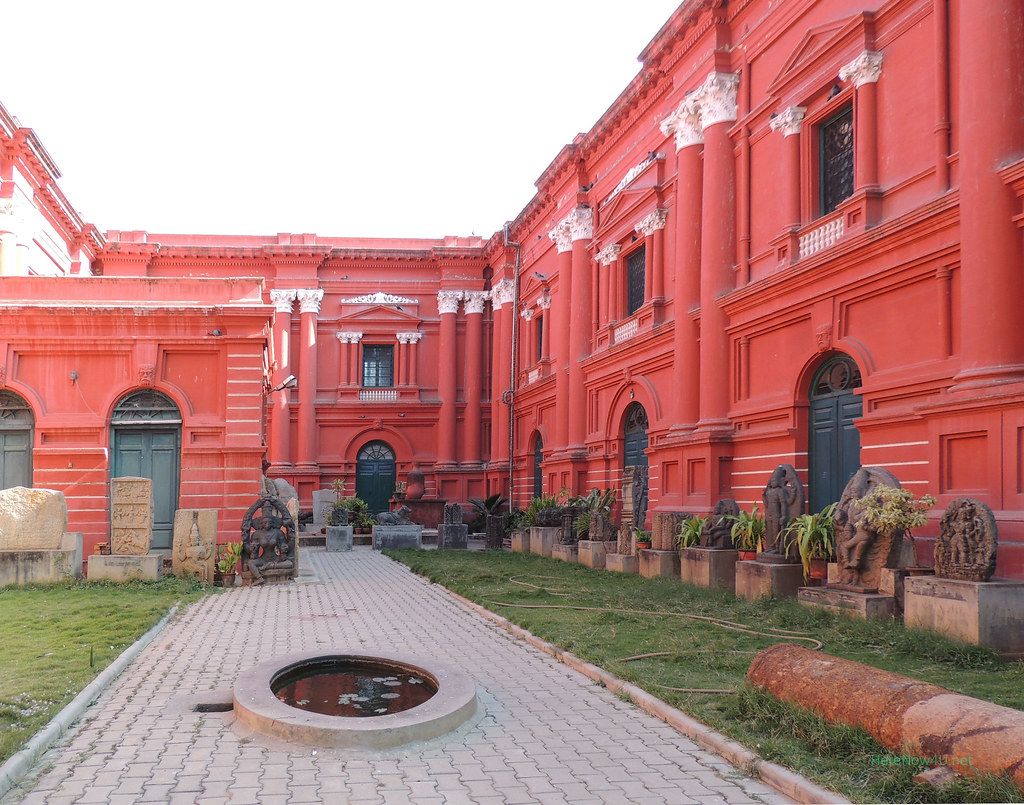
Open air exhibit in the courtyard of Venkatappa Art Galery, discovered when circling the building.
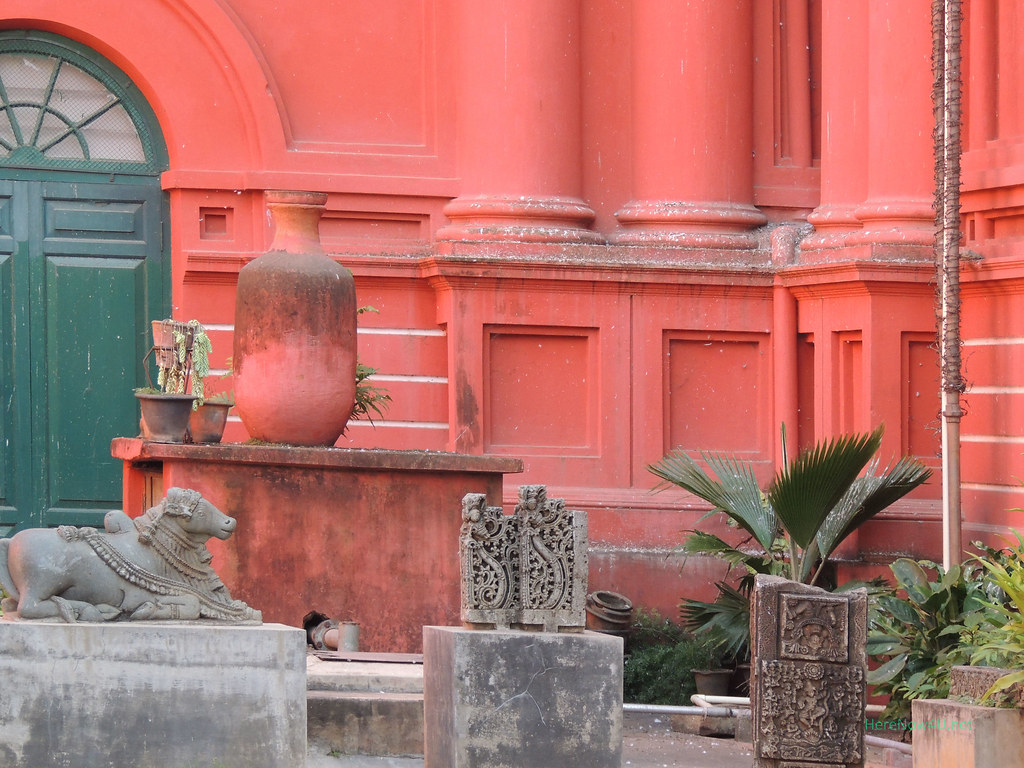
In striking distance even more beautiful.
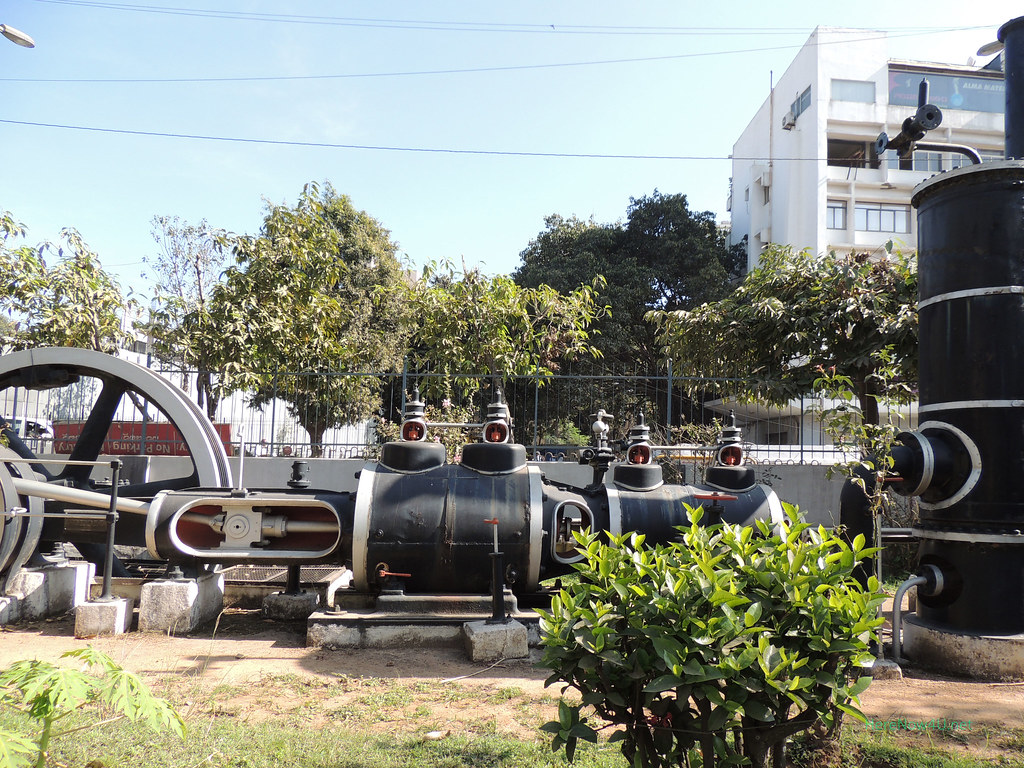
Original steam-engine in front of Technological Museum
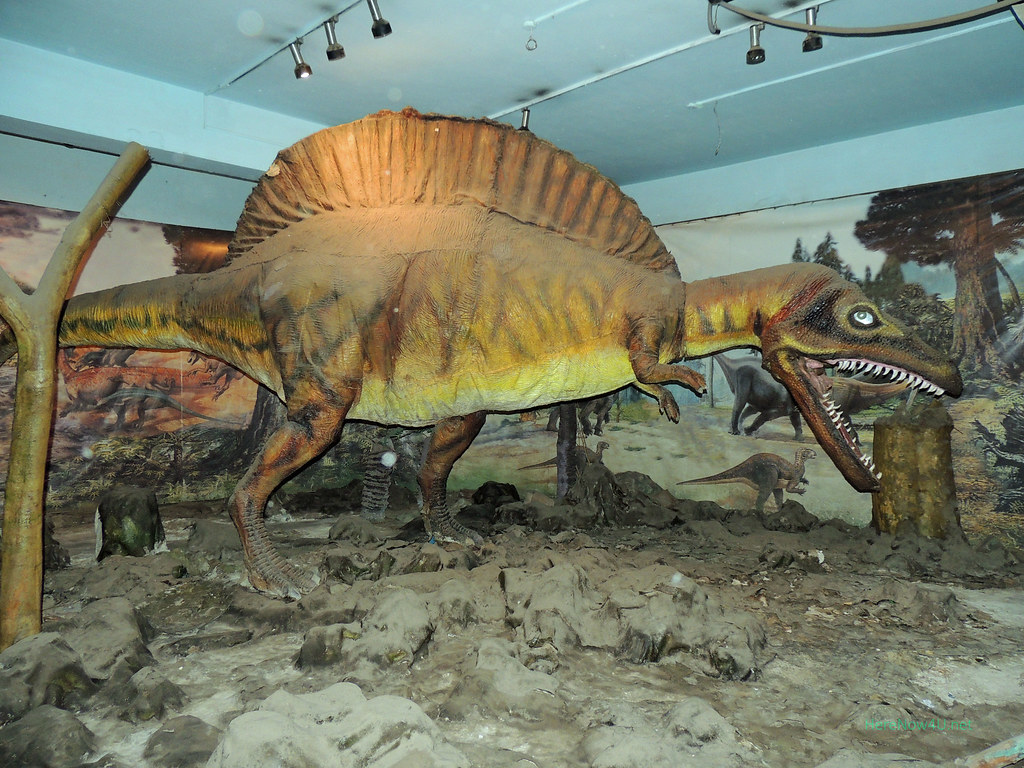
Opens and shuts its huge muzzle with its knife-sharp teeth and howling hair-raising in a way that not only children burst out with laughter.

Replica of the Wright brothers' airplane
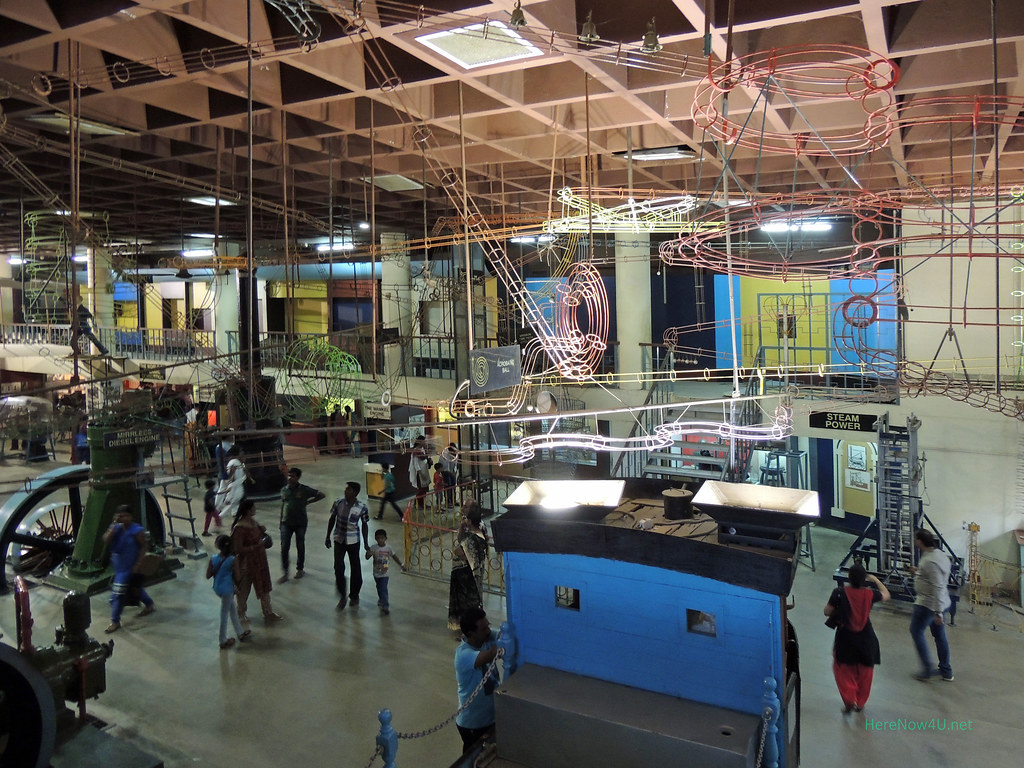
View on 'Machinehall' of Technological Museum from the platform in the first floor
Finally the taxi driver took us across the town to a contrast like destination of the Technological Museum: The huge Sri Radha Krishna Chandra (Hare-Krishna) Temple. But soon after our shoes we had to deliver our camera, so inside no photos could be taken. An entire hill was covered with a multi-stored temple complex for thousands of visitors. With caution one is directed with the help of gentle staff or markers through the area and can only wonder about the creativity of the erectors. Everywhere there are commercial bases to achieve spiritual souvenirs or delicacies for physical well-being. The fact that we all are nothing but grains of sand in the current of the universe has been clarified there very well. Thousands were there at the same time as we, but in the broad formation of the area there was no packing down. A contemporary masterstroke in logistics and temple architecture.
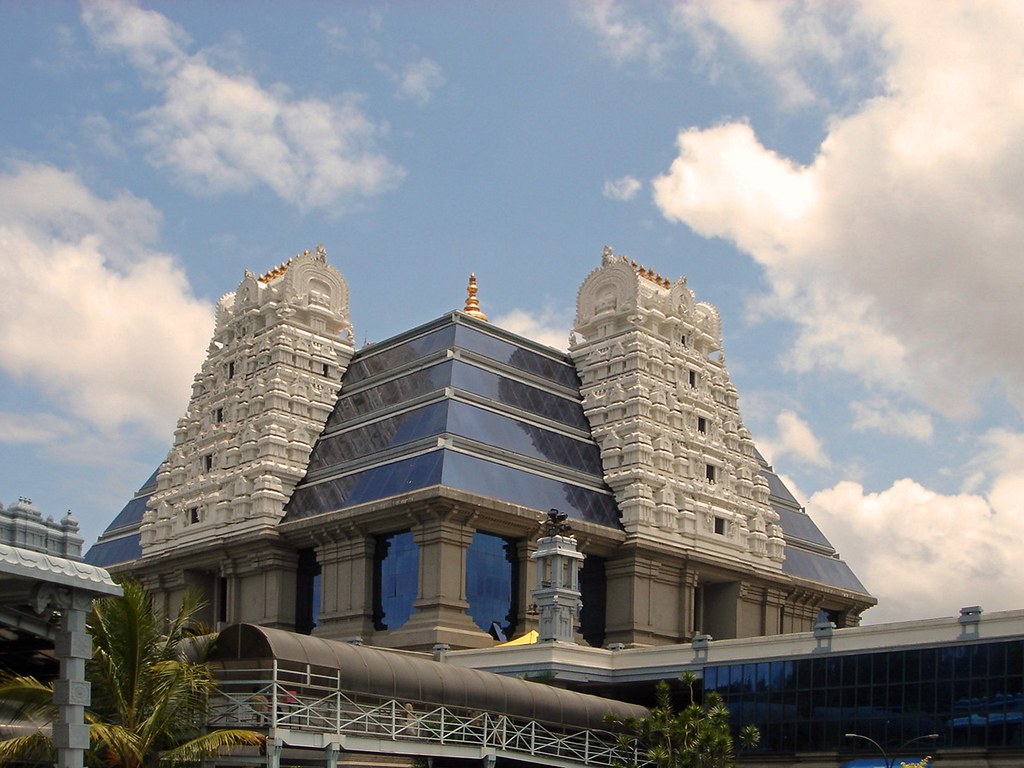
Sri Radha Krishna Chandra (Hare-Krishna) Temple, seen from outside
 Editor Carla Geerdes
Editor Carla Geerdes
